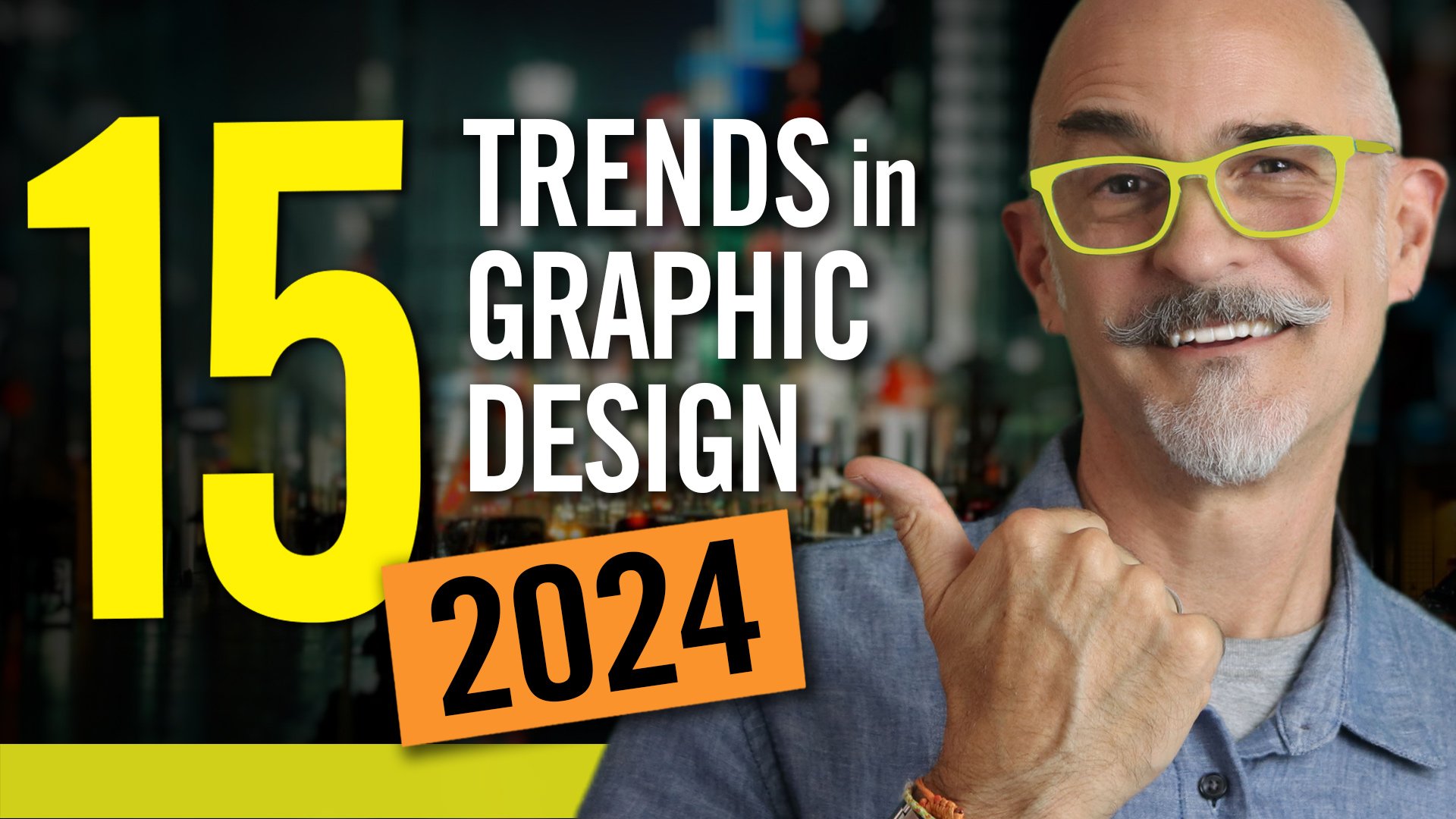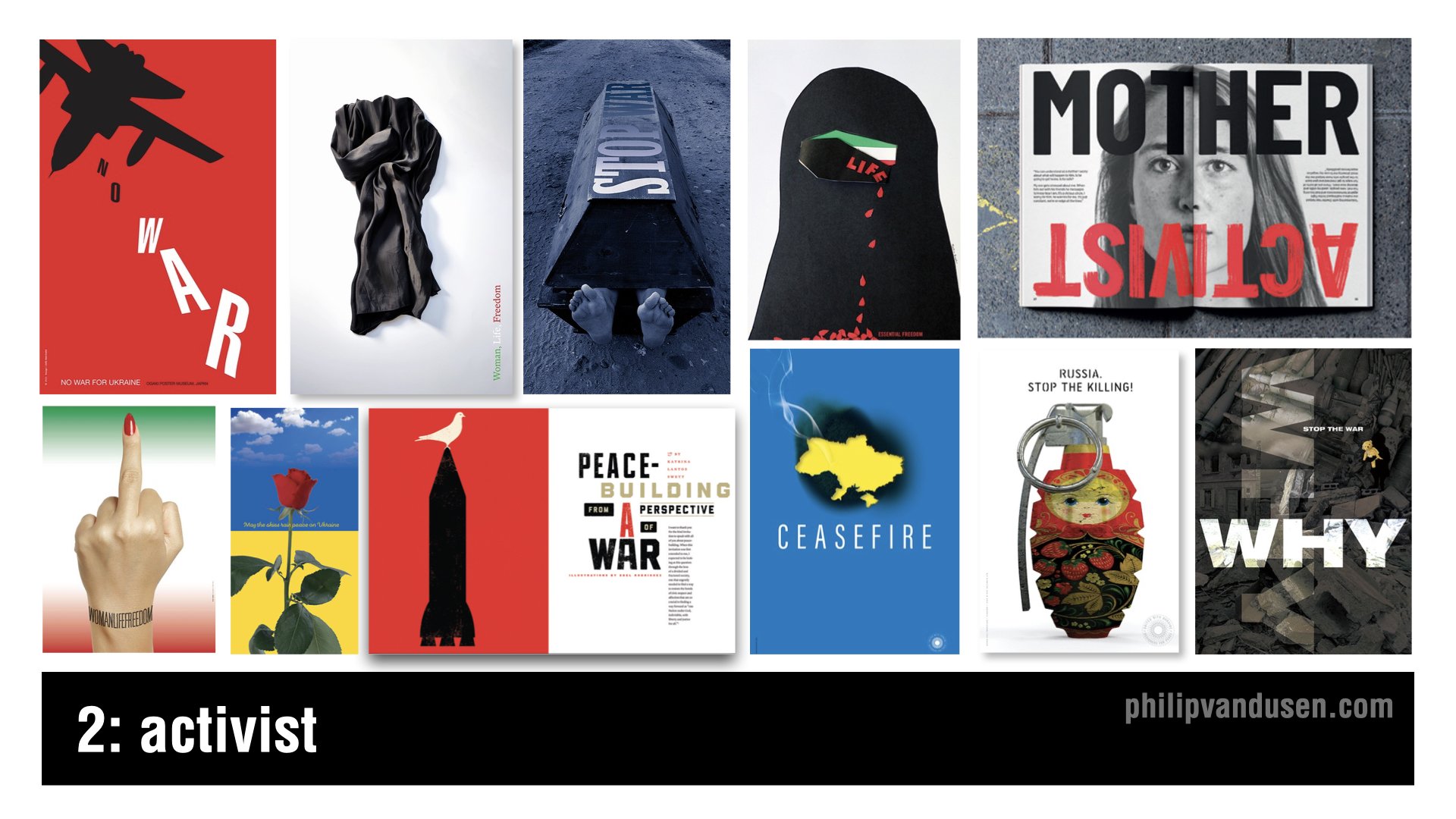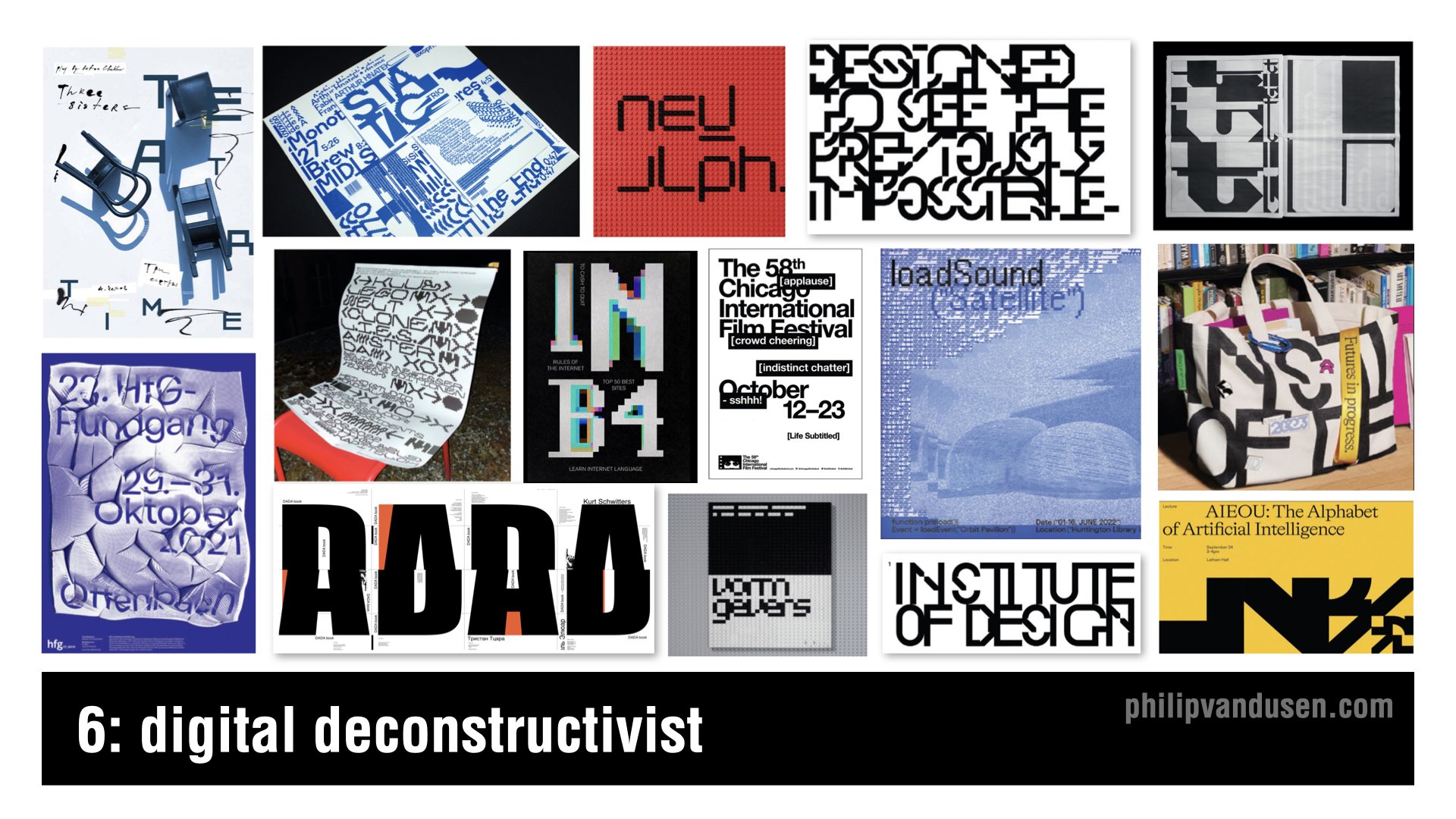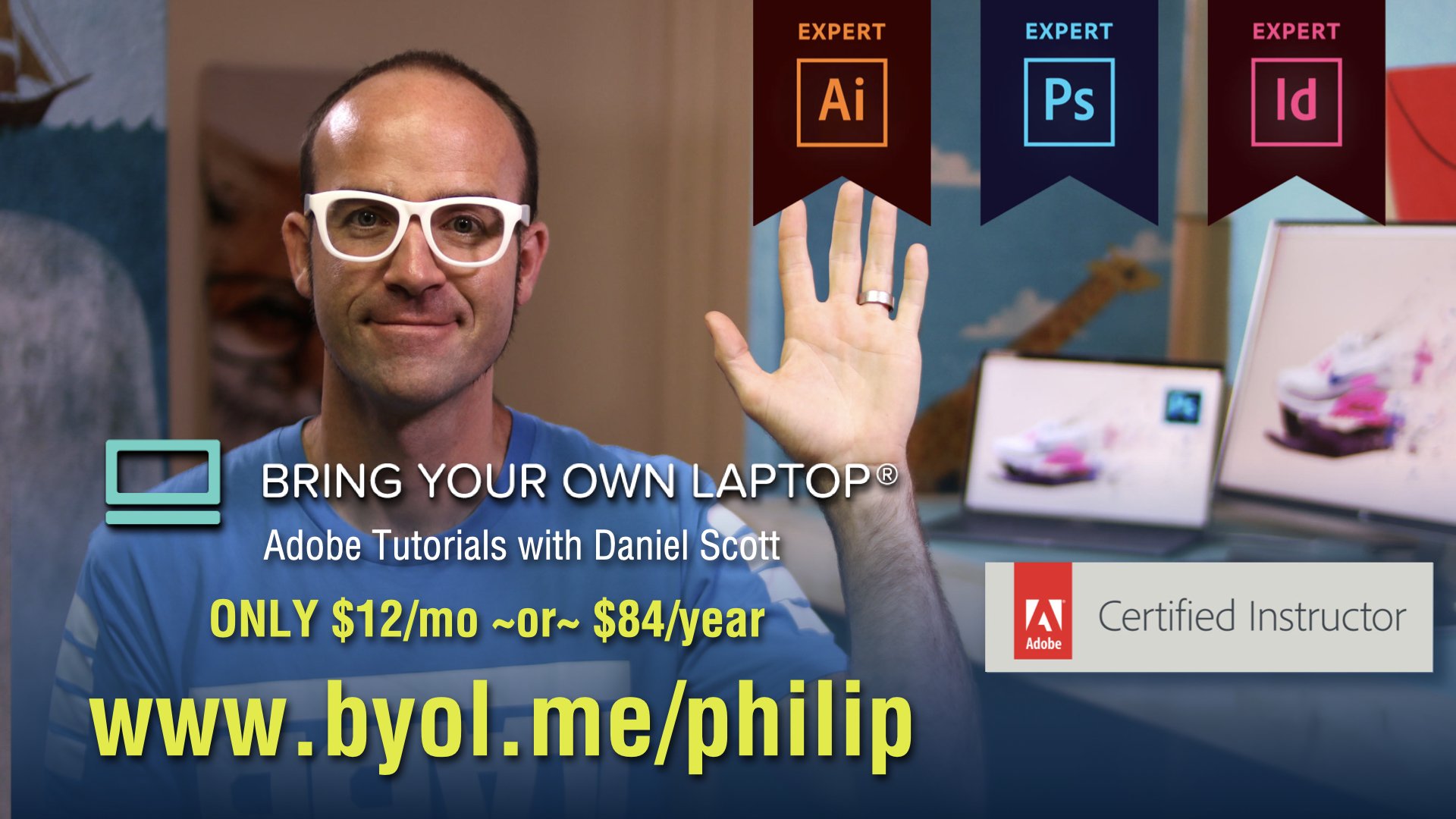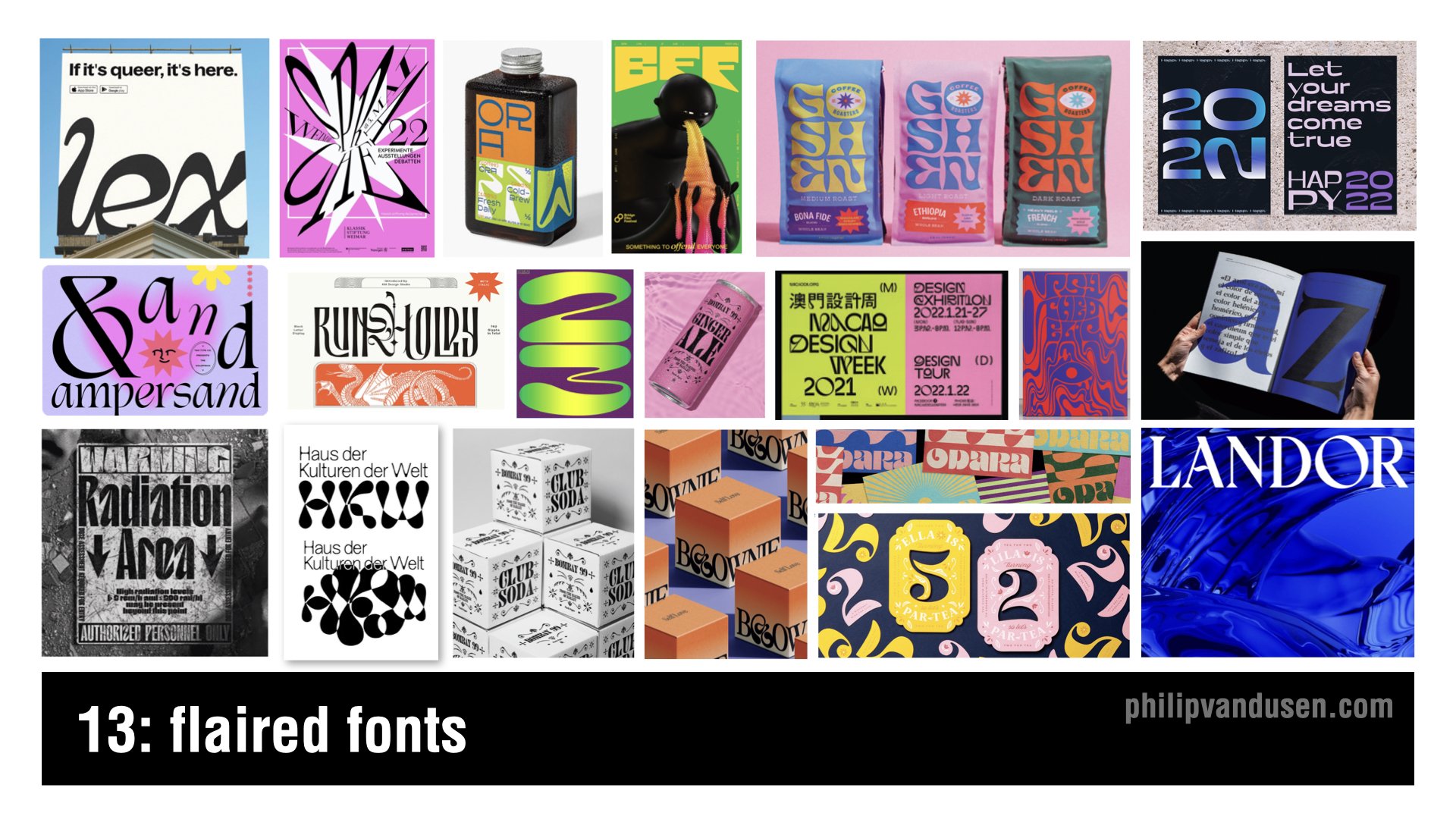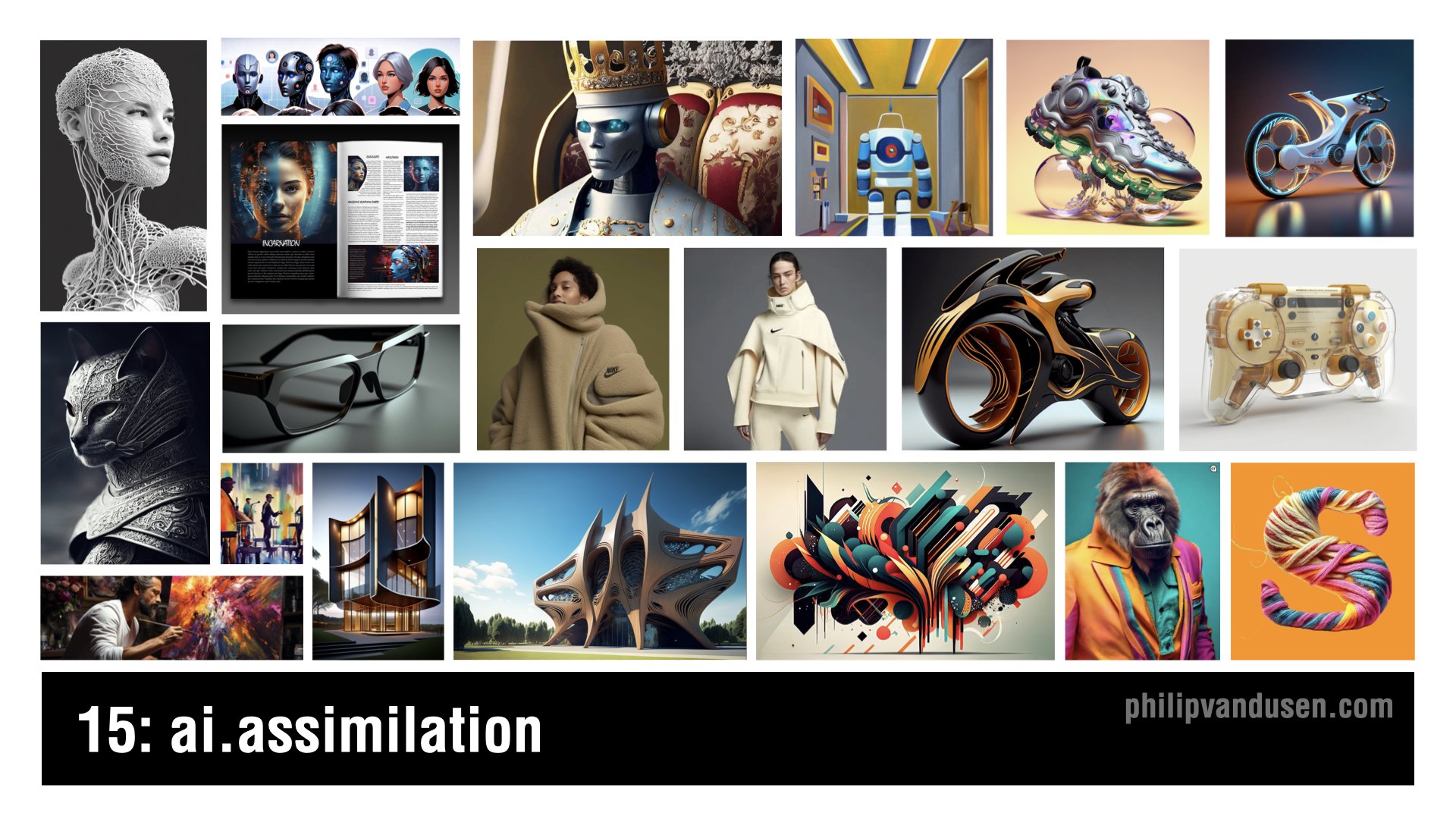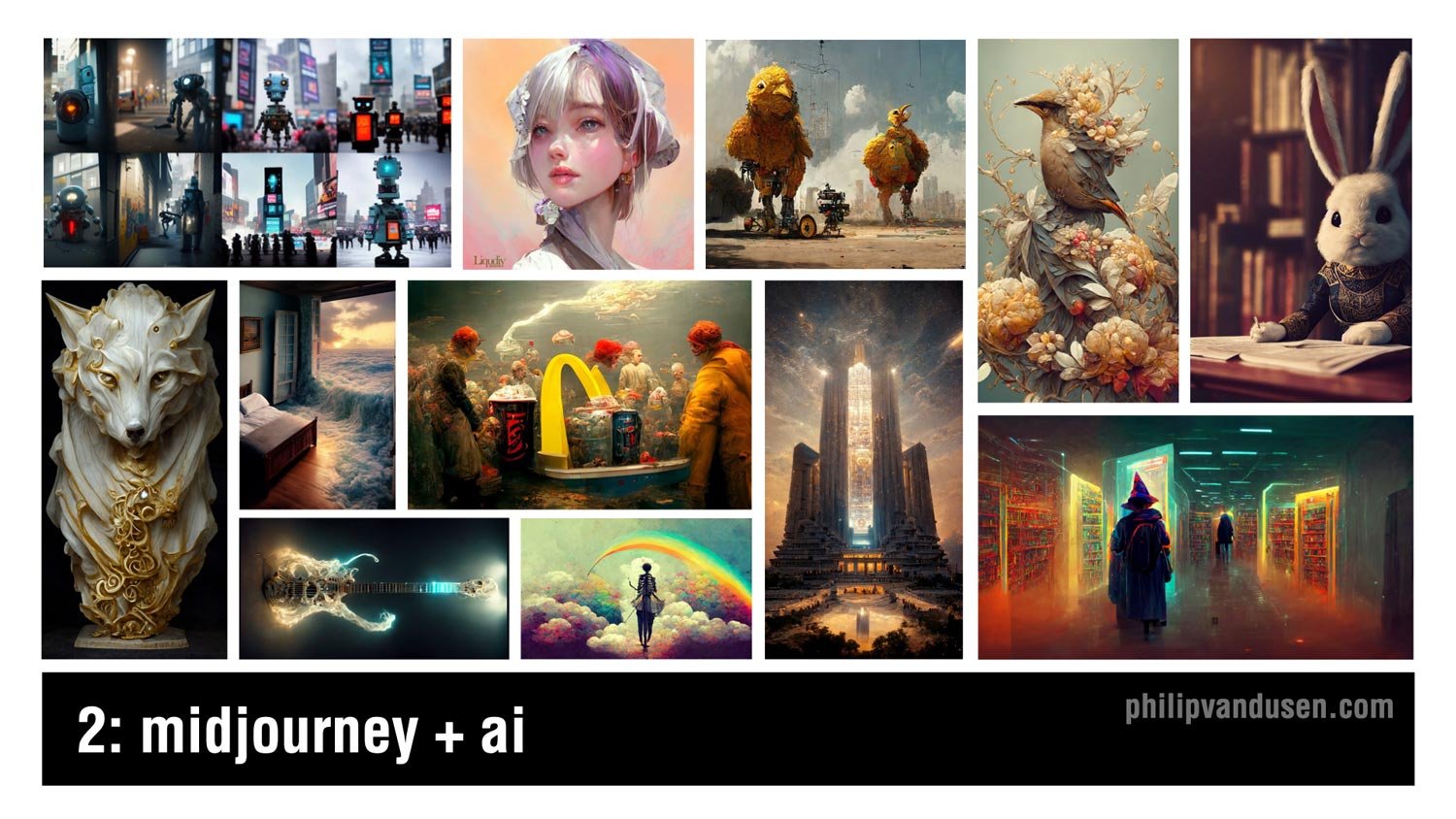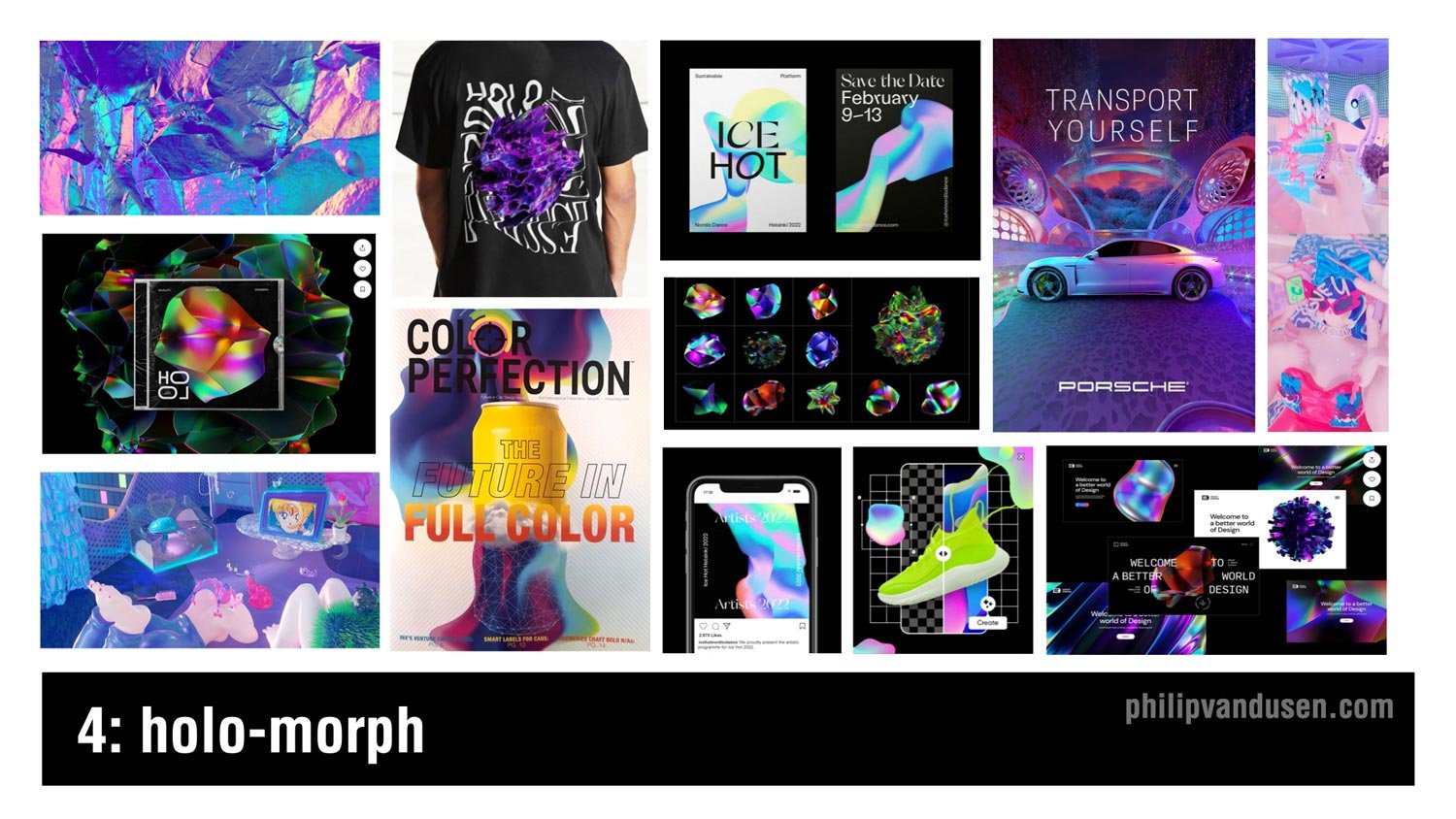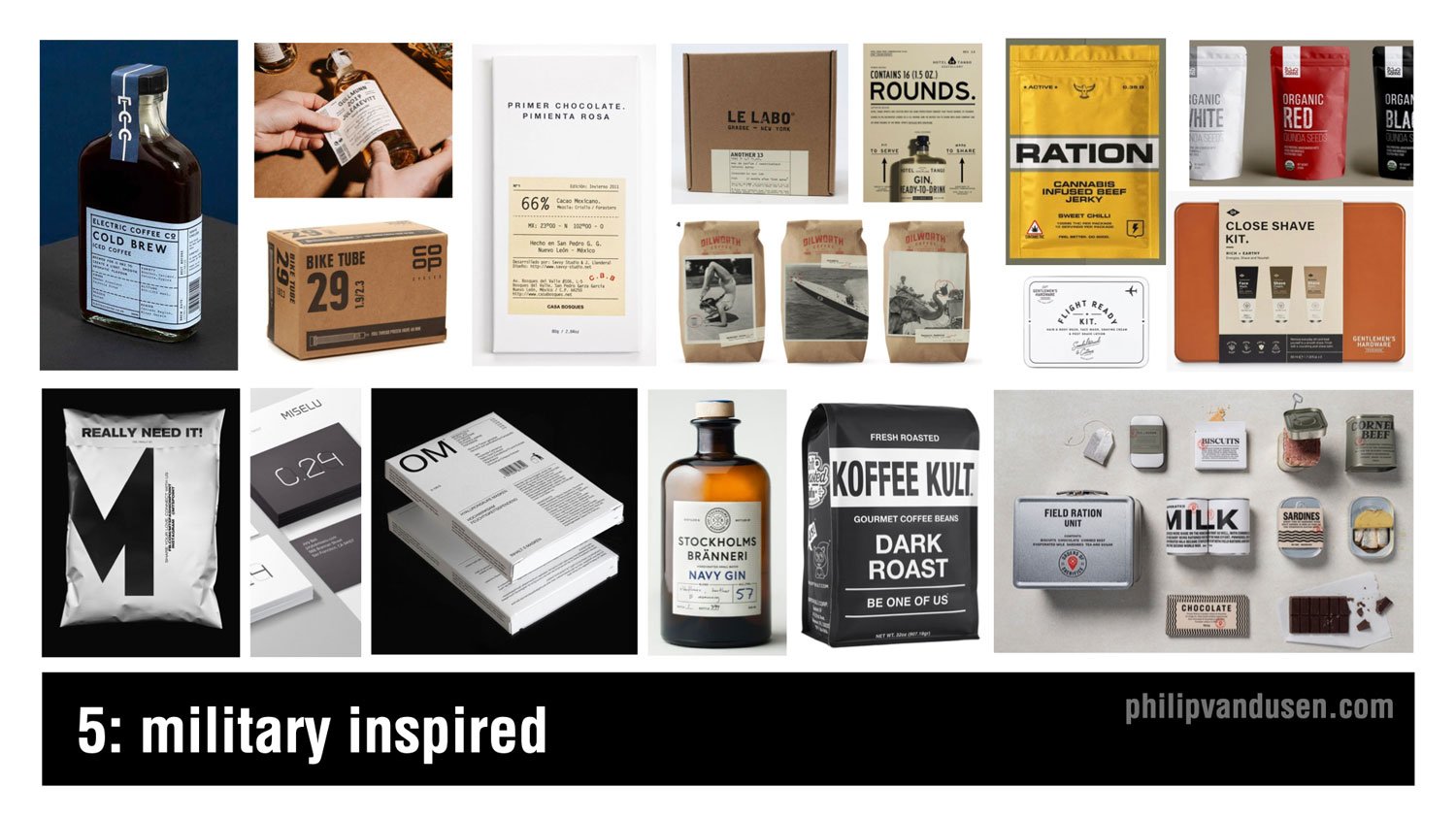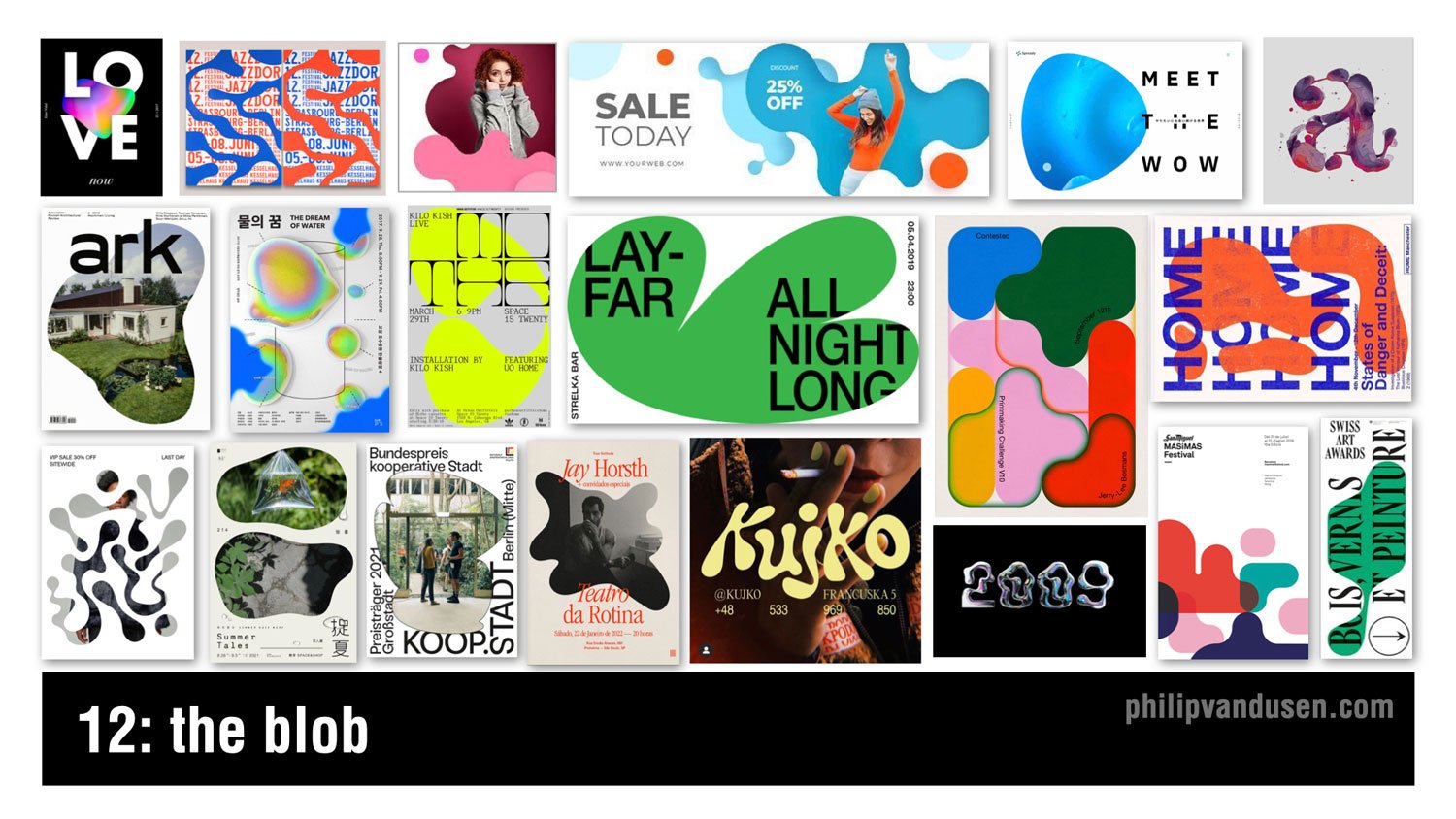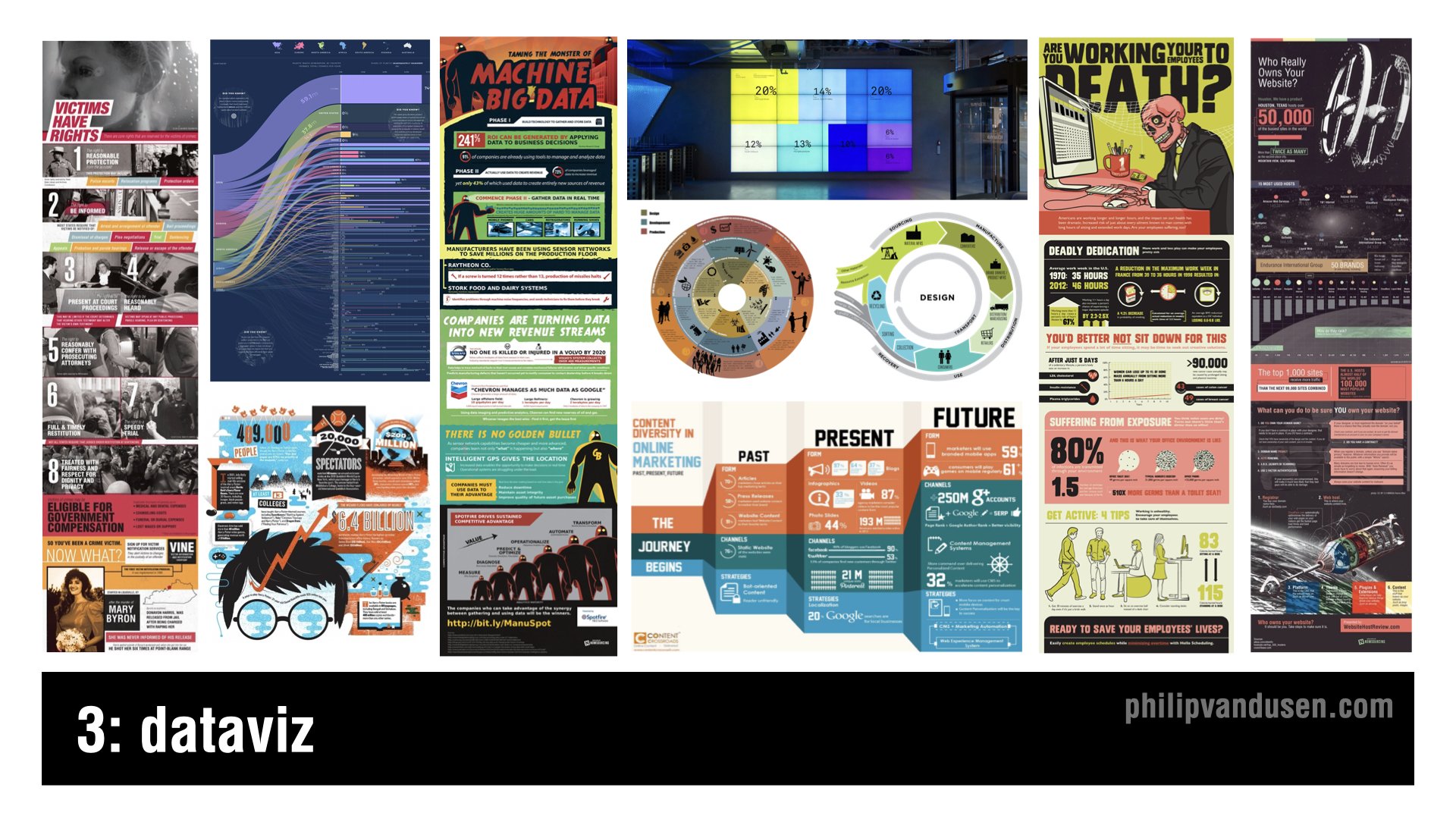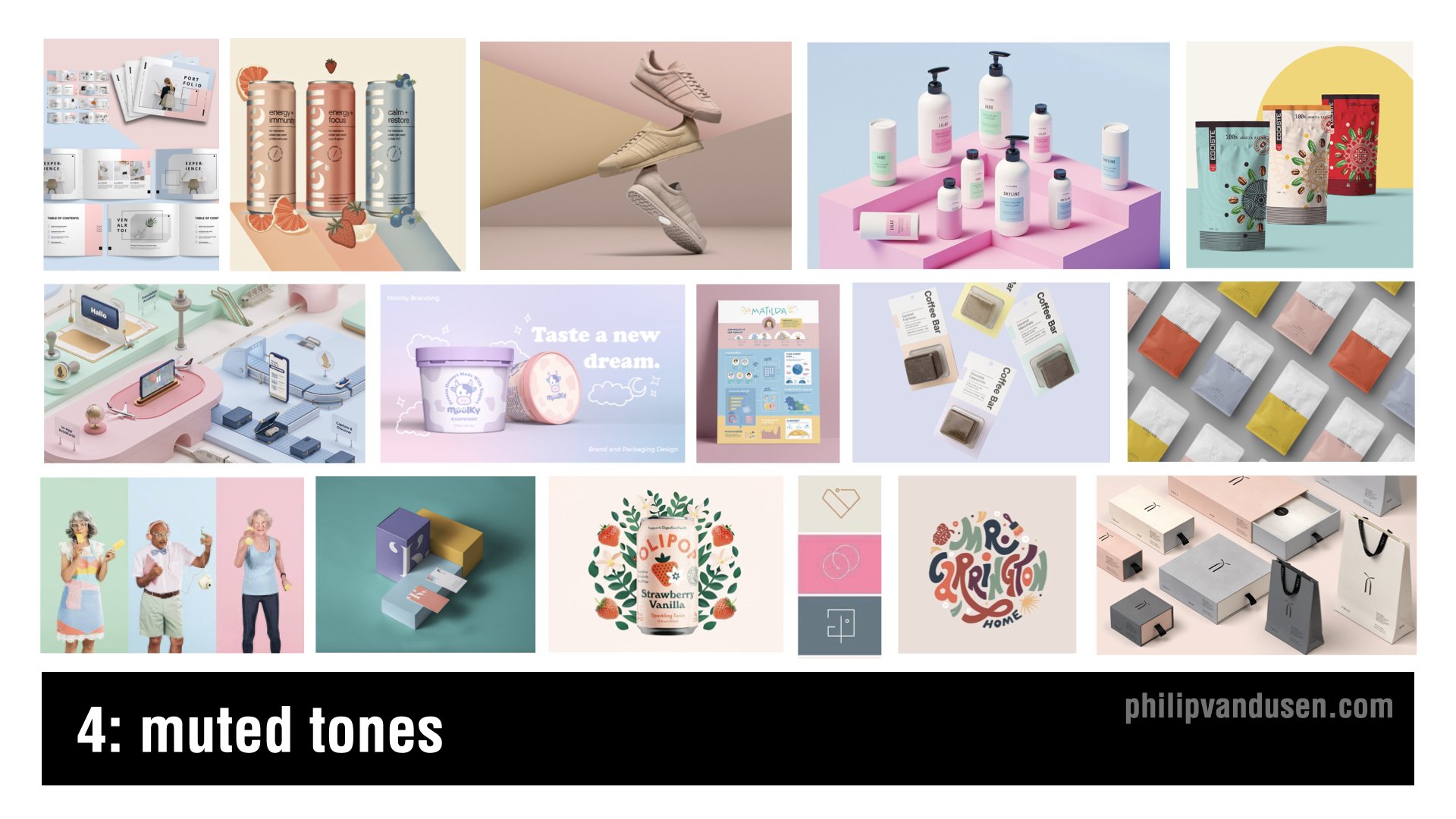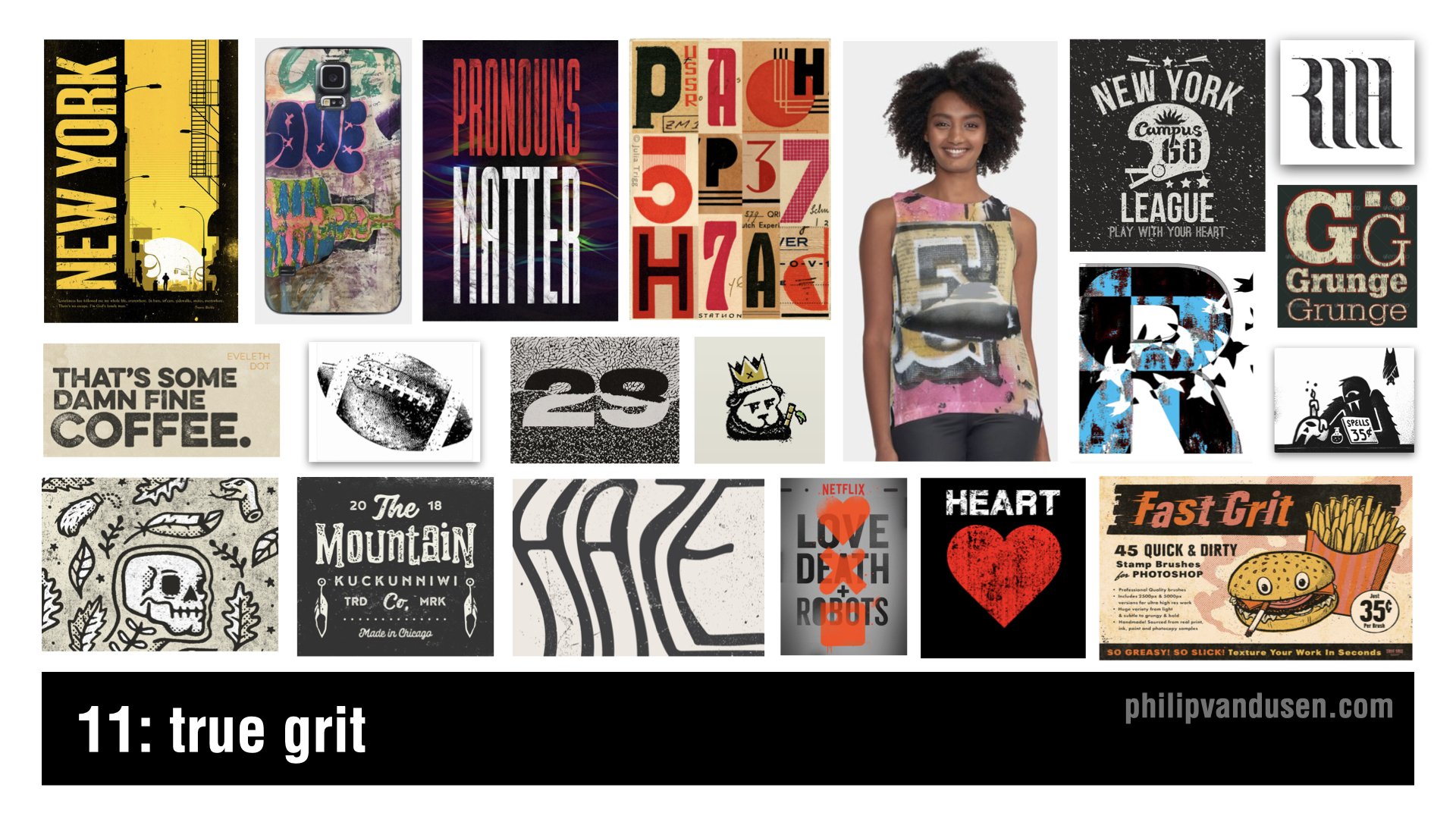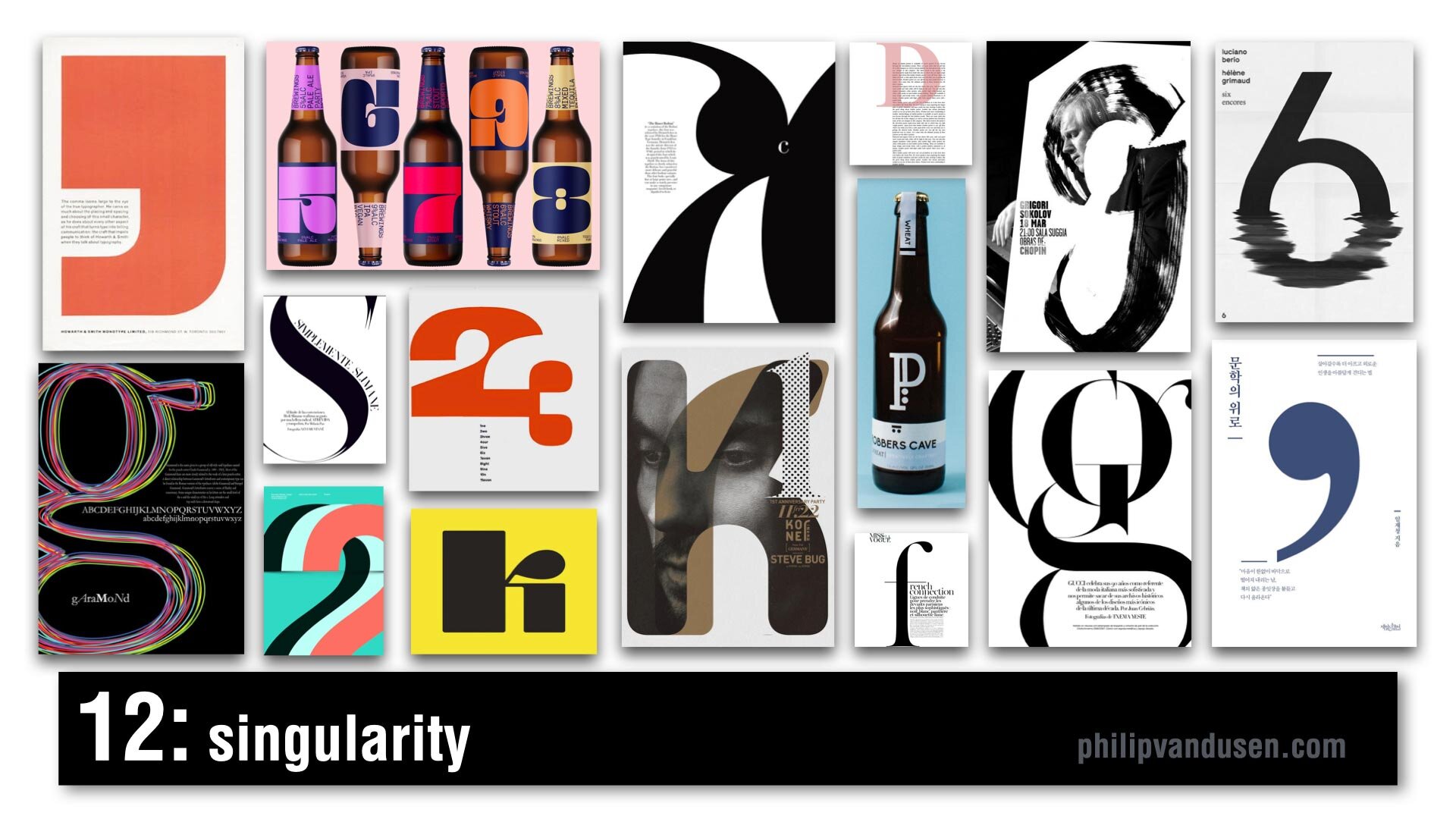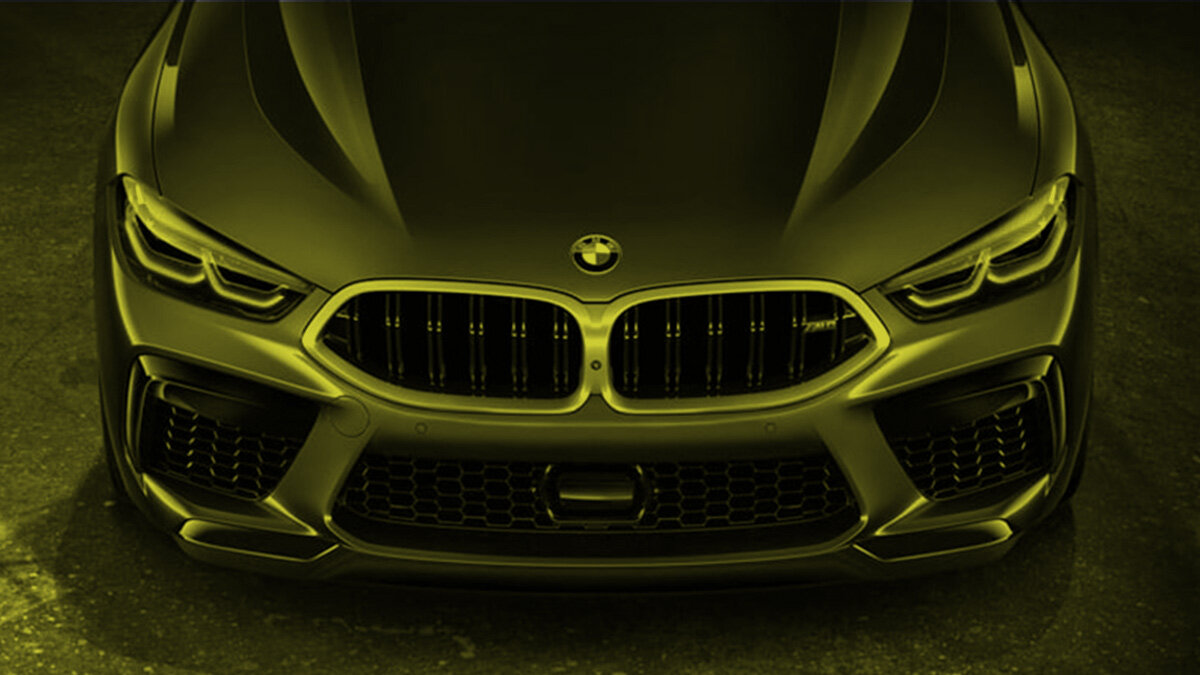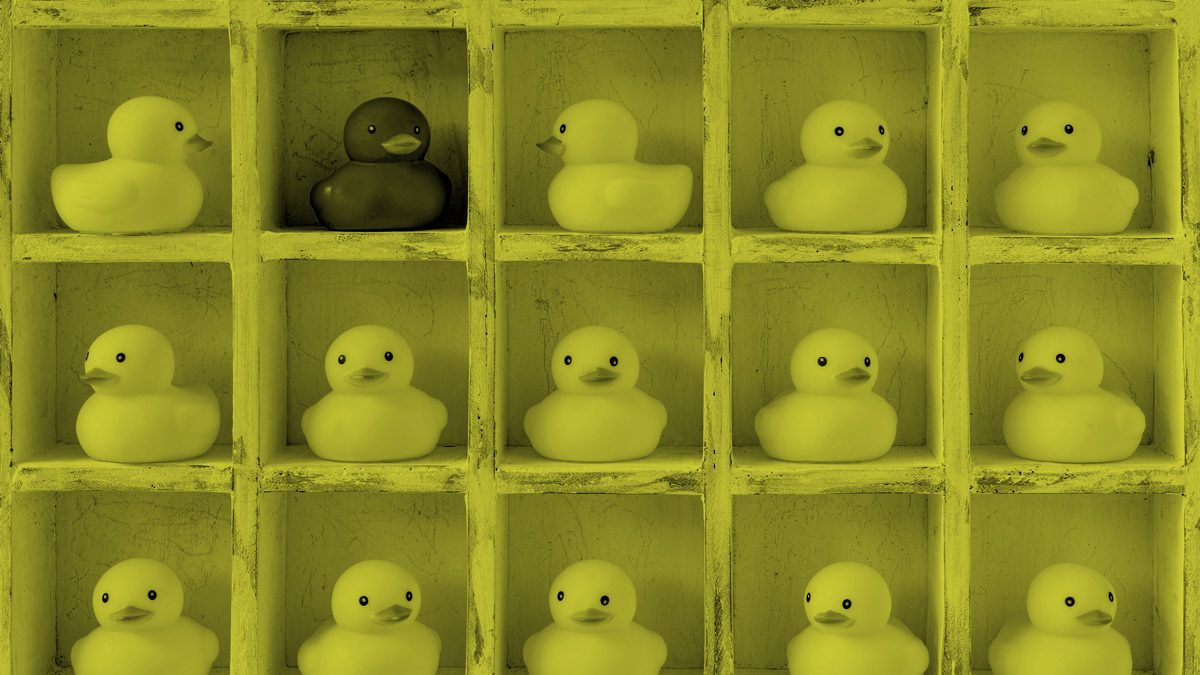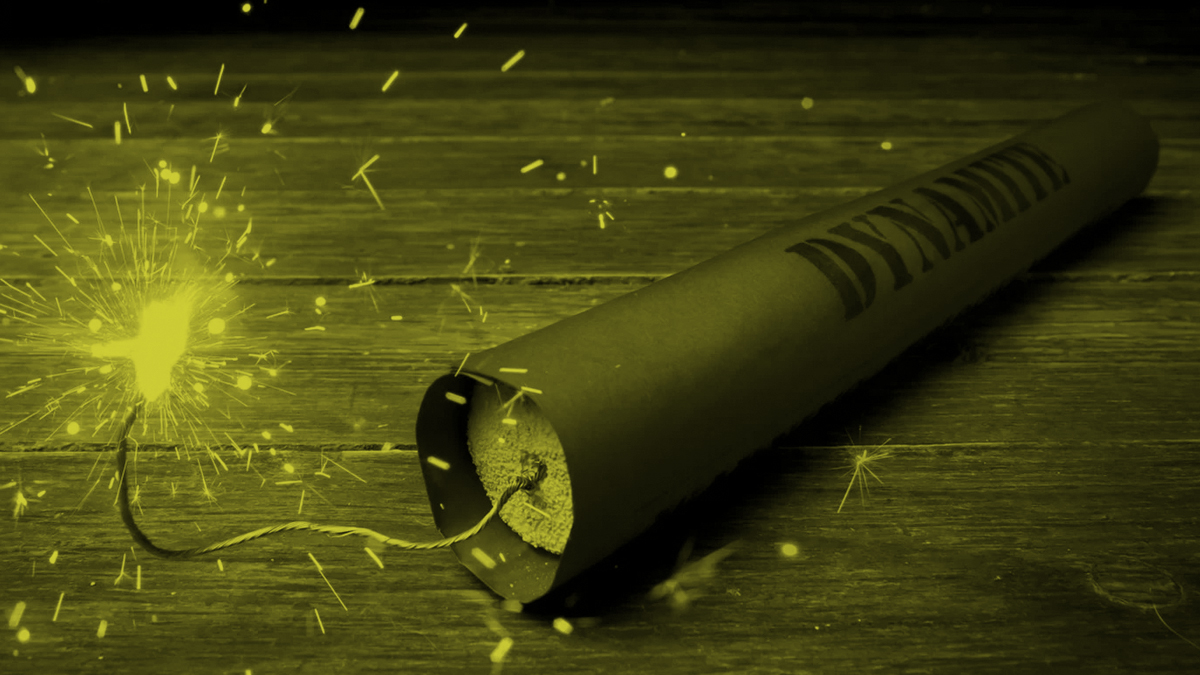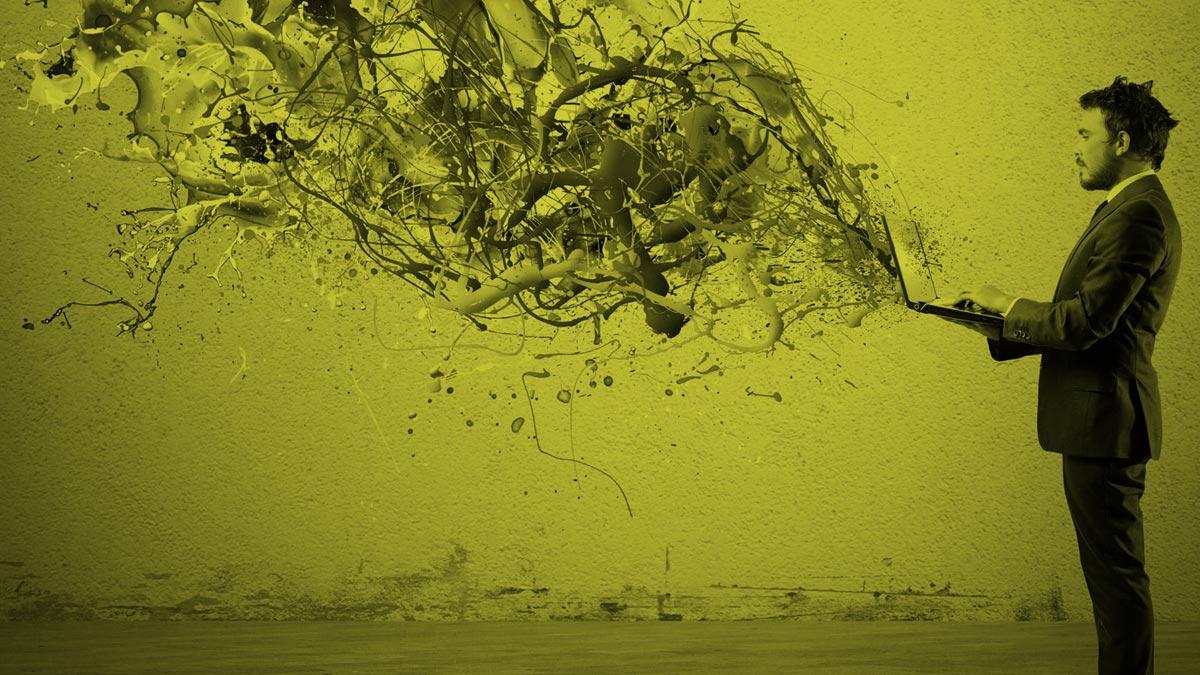15 Graphic Design Trends for 2024
Let’s dive into 15 trends in design that I've recognized in the market that will influence the creative industry in 2024.
But first a little context: I was in the fashion industry for 15 years and travelled the globe shopping for trend 4 times a year, Tokyo, London, Milan, Berlin, Paris, etc. Trend hunting was my job. I’ve worked with a host of the major trend houses like WGSN, Stylus, JWT, Pantone.
The one thing I’ve learned over the years is that trends are never limited to specific periods of time and are very fluid in how they appear.
Trends are revisited, altered, revised, new perspectives are added, they disappear and then they come back over and over - particularly in the fashion industry. The design aesthetic called Russian Constructivism is over 100 years old and it never really seems to go away!
Some trends may take a few years to grab hold and become recognizable as popular.
Some of you reading, who see and recognize trends early - may have mentally registered them long before seasoned folks do, so these trends may seem ‘old’ to you already. But to many, who have no formal training in design history these trends are totally new.
What I recommend is using trends to stay inspired, possibly use as a jumping off point in your work and then making that design your own.
Or, you can choose to consciously react against these trends. It's totally up to you, but knowing what the trend is is critical to informing your work one way or the other and to keeping your clients informed as well.
Now let's look at some trends!
Trend 1: Heatmapping
Trend number one is called “Heatmapping”. This trend is characterized by blends of color often depicted as a rainbow of colors emanating from a source object or creating some kind of abstract shape. These colors suggest the kind of heat map that you would see if you used infrared imaging to look at or scan an object or a scene.
It also suggests the result of eye tracking evaluation software that's often used in consumer research. The subject matter can be figurative, or an abstract shape, or something organic, like a flower, as in the packaging on the upper left.
This technique is being used in a wide range of places, from apparel, to home furnishings, app design, print media and web design.
Trend 2: Activist
Trend number two is called “Activist”. The geopolitical landscape has been particularly intense in the last year and will continue to be unfortunately through 2024.
Now, I want you to understand I'm not trivializing violent conflicts by calling them a ‘design trend’. They aren't and they shouldn't be.
But what we need to recognize is that throughout history, designers have led the way when it comes to highlighting injustice in the world and inspiring action and change.
And when it comes to having both the imagination and the creative means to communicate in a motivating way, we designers are perfectly suited to the task.
Let's celebrate the amazing work of thousands of designers who will be flexing their superpower of visual communication in 2024 and continue to be a global voice for good.
Trend 3: Anarchist
Trend number three is called “Anarchist”. This trend is reminiscent of the two trends that have frequently been called ‘maximalism’ and ‘glitch’, that have been combined in a visual mashup.
This trend is characterized by a complete visual anarchy in imagery, color, and typography, hence the name. There also seems to be a sense of nihilism in this visual style.
Very little true design communication is intended or achieved. Instead, the intention is to create complete visual chaos. This technique can take the form of digital static or complex photographic collage or compositing.
And this trend relies almost entirely on imagery, although it often incorporates a Deconstructivist use of typography as well.
Trend 4: Botanica
Trend number four is called “Botanica”. In stark contrast to the pervasive visual design trends that are heavily based in digital technology, the Botanica trend brings us back to physical reality, plant life in particular.
I think this trend is a reaction to the political and cultural strife in the world today and is trying to create a sense of peace and calm in the viewer and the consumer.
There's a timeless beauty in these natural forms and colors that are a real delight to the senses. The color and imagery can be realistic and true to life. Or, conversely, it can be hyper real and futuristic, taking the form of AI generated, alien plant life forms that have no basis in reality.
Botanica will be used heavily in product packaging, spirits, print, advertising, and can even be found in way-finding.
Trend 5: Scrapbooking
Trend number five is called “Scrapbooking”, and is essentially a modern twist on collage, with the update being that the colors that are used are often brighter and more cheerful.
In this trend, we're seeing a vibrant and eclectic mix of imagery, the range of textures that often juxtapose radically disparate sources and time periods.
This trend nods to the historical art of collage, dating back to the early 20th century, and used by the Dadaists and Russian Constructivists to challenge the traditional perspectives and create layered meanings.
Brands that are looking to convey modernity with a touch of nostalgia can leverage this trend to create memorable designs and resonate on multiple levels.
Scrapbooking's uses include traditional print media, magazines and posters, web design, editorial illustration, and advertising.
Trend 5: Digital Deconstructivist
Trend number six is called “Digital Deconstructivist”. This trend is a digital homage to the Deconstructivism movement, which fragmented and manipulated ideas of structure and form.
Mirroring the architectural rebelling of the late 20th century, the Digital Deconstructivist trend shakes up graphic design with layered complexity and unexpected juxtapositions of forms and layers, often relying on slice or pixelated typography.
Text elements are overlaid and reassembled. They challenge readability while pushing the boundaries of conservative design conventions.
It creates a visual language that speaks to the tech savvy and the avantgarde, and it's perfect for interactive media and motion graphics and brands that want to communicate cutting edge thinking.
Trend 7: Environmental Typography
Trend number seven, “Environmental Typography”, is about breaking out of our digital confines and embracing the physical world. It's a blend of graphic design and architecture, where typography becomes an integral part of the environment on a human scale.
This trend harkens back to the days of sign painting, but with a modern approach using bold, towering letters and numbers to create an engaging experience.
Its applications include way-finding in corporate buildings to immersive brand experiences in retail spaces. or bringing an exhibition to life.
Think of it as functional art that not only informs, but also transforms our physical spaces. As brands vie for attention, environmental typography offers an impactful way to communicate messages, whether it's a colossal headline wrapping around a building or a scrolling message that guides you through a space.
Trend 8: Geometrica
Trend number eight, ‘Geometrica’, celebrates the simplicity and harmony of geometric forms.
With roots in the Bauhaus movement and Swiss style, which both emphasize the beauty of clear, precise geometric shapes, this trend brings those principles into the digital age.
This trend is characterized by bold, youthful colors and shapes interacting in a way that's both playful and meticulously organized. It's a balance of form and function, where the clean lines of geometry meet the limitless possibilities of digital design.
Because design trends can sometimes reflect the extremes of the aesthetic spectrum, this trend is a noticeable reaction against the design chaos that we see in the ‘Anarchist’ and the ‘Digital Deconstructivist’ trends.
Applications for this trend would include mobile app interfaces, web design, print, packaging, and editorial layout, among others.
Bring Your Own Laptop: Adobe Training with Daniel Scott
I want to take a moment and mention that I often get comments on my blog posts and trend videos asking how to achieve the aesthetics in the trends that I'm featuring. So I want to share with you a not-so-secret secret.
Daniel Scott, who in my opinion is one of the best Adobe app trainers out there, has an Adobe training site called Bring Your Own Laptop. The site's subscription based and it's an insane value at only $12 per month, or $84 per year, for access to all the training on the site.
Daniel sometimes even uses the trends that I feature in my YouTube trend videos as examples in his trainings.
So if you want to get better using your favorite Adobe apps, or learn a new one, I suggest that you head over to https://byol.me/philip and check out everything that he has to offer. I hope that you'll use this affiliate link if you want to support my continuing trend-hunting work here, as well as on my YouTube channel.
Now, let's get back to the trends.
Trend 9: Golden Era
Trend number nine is called “Golden Era”. Golden Era is a trend that exudes luxury and sophistication, reminiscent of the Gilded Age and Art Deco's opulence.
Gold has always symbolized wealth and exclusivity, but one of the key intentions of using gold in this way is to differentiate from the heavy use of silver, chrome, and brushed titanium that's so common in digital graphic design and technology design.
This trend is perfect for brands that want to convey a sense of premium quality and timelessness. From packaging to branding, it carries the weight of tradition and can set a product or service apart in a saturated market.
Whether it's a minimalist design that uses flat gold color, or a full blown shiny foil spectacle, Golden Era has applications in print, packaging, fashion, digital media, and environmental design, among others.
Trend 10: Kiddieland
Trend number 10, ‘Kiddieland’, is a playful trend that taps into the joy and uninhibited creativity of childhood.
With all the cultural strife and seriousness in the world, it offers a bit of refuge in its bright colors and whimsical illustrations, and fun typefaces that make the designs feel approachable, and fun.
Kiddieland uses a fusion of simple shapes and bold primary colors that evoke a sense of nostalgia and play, and actually really relates to the ‘Geometrica’ trend that I mentioned previously.
While it's obviously appropriate for companies targeting the kids market, it's also perfect for brands that are young at heart or aiming to communicate simplicity and fun in their messaging.
This style is particularly effective in consumer packaging, education materials, and interactive design. It can also bring a light hearted touch to marketing campaigns and inject energy and life into social media content.
Trend 11: Better Red
Trend number 11, ‘Better Red’, captures the power and intensity of red, a color that's always made a strong statement in design. It's bold, energetic, and typically paired with black and white, so if you want to command attention, use red.
In this trend, the color red is used to create impact and focus. It can be an uninterrupted color backdrop for a minimalist design, as a way to make content shine, or as a part of a more complex pattern that energizes an entire composition.
Better Red is ideal for brands looking to take a powerful stance, whether it's through a website, a poster, or product packaging. This trend can be particularly effective in print, where you want to grab attention quickly, and in packaging where it can also communicate luxury and prestige.
Trend 12: Elasto-type
Trend number 12, ‘Elasto-type’, is a dynamic trend where typography isn't just read, it's felt.
It's characterized by taking fonts and extending them beyond their usual limits, adding a sense of motion to the static page. This technique gives words a visual rhythm that can be seen as a standalone graphic element in their own right and is often used that way.
It's a style that works well for brands looking to convey innovation and can be particularly impactful in digital uses like web design, to animate a static layout or guiding the eye's movement and engaging viewers.
It's also effective in print, offering a fresh perspective on posters, book covers, and any medium where you want the typography to make a really bold statement.
Trend 13: Flaired Fonts
Trend number 13 is ‘Flaired Fonts’, a trend that brings a dose of whimsy and character to typography.
Fonts take on a life of their own with curves and embellishments and a tangible sense of movement. They're a modern take on the days of Art Nouveau's ornamental stylings.
It's almost like they're sans serif fonts, who are trying their hardest on the dance floor to become serifed!
They're versatile enough for creative poster designs, editorial headlines that need to sing, and are perfect for brands that want a unique voice and a personal touch.
In digital applications, where they achieve a level of visual animation, they're a great choice for brands that are looking to express individuality, and as the name says, ‘flair’!
Trend 14: Vintage Americana
Trend number 14 is ‘Vintage Americana’. Vintage Americana is serving, this time, as a rejection of the modern. That is, all-things-AI, technology or anything digital.
It's a feel good, nostalgic nod to a classically American design aesthetic, reminiscent of the mid 20th century. This timeless style uses retro fonts and warm color palettes, imagery, layouts, that conjure up the good old days.
The Vintage Americana trend is perfect for brands that want to establish a perception of heritage and tradition - and those looking to evoke a sense of comfort and reliability.
It works really well virtually anywhere, from print to digital, apparel, spirits, out of home, just to name a few. It can be particularly impactful in packaging, where it can evoke a sense of quality and craftsmanship of bygone eras.
Trend 15: AI Assimilation
Trend number 15, ‘AI Assimilation’ marks the evolution of artificial intelligence from the novelty it's been in 2023 to a fundamental aspect of creative design in 2024.
It's no longer just about producing fantastical images to share with your friends, it's now a crucial tool that can be used in designing tangible products, items that we interact with every day in our lives.
This trend shows AI's power as an ever expanding reality that's reshaping entire industries as we speak, enabling the creation of objects and spaces that were once impossible to conceive or to visualize.
The aesthetic of AI Assimilation is characterized by its mind bending detail and precision and its ability to radically push the limits of form and function.
Applications include the fine arts, industrial design, product design, transportation, architecture, fashion, accessories, packaging, layout, animation, and that list is just growing longer every single day.
I hope you were inspired by these 15 trends and design for 2024, and if you were, please take a moment and subscribe to my newsletter, Brand•Muse, so you can stay up to date on all the news, trends, resources that make the creative world go ‘round!
As always, I'd also really appreciate it if you'd forward this post, or the associated YouTube Video to a friend or a colleague so others can be inspired too.
Stay creative and bye for now.
How Can We Can Help Your Business?
Is your brand rockin' like nobody elses? Or is it a little tired? Maybe it's just being born. You want to do it right. That's where we come in.
We create new brands from scratch. We fix broken ones. We have all the brainpower, creative chops and marketing magic you’ll ever need and a ton of loyal clients to prove it.
You want nimble? We're the new agency paradigm. We scale up and down depending on your needs so you never pay for resources you aren’t using.
We’ll put the power of brand strategy, design and the most contemporary marketing techniques to work for you. Let’s talk.
Design Rush Features Verhaal in Best Beauty Product Packaging Designs for 2023
The popular design website DesignRush is honoring the work of Verhaal Brand Design by featuring the brand identity and packaging design work we did for Marie Bertrand, Founder of SkinScience in launching the private label line of products, Aliquote Skin.
We’re proud of the work we did in developing the Aliquote Skin line and are happy to be receiving the recognition of our branding and packaging expertise.
You can access DesignRush’s feature of our work by visiting this page..
Here is just a sample of our Aliquote Skin work. You can view the full case study here.
15 Trends in Graphic Design for 2023
I often get asked:
"Phil, how do you come up with these trends?"
As far as my trend hunting CV goes, I was VP of Graphic Design and Trend at Old Navy for 11 years and traveled the globe shopping for trend 3x a year, Paris, Tokyo, London, Milan, Berlin etc. I’ve worked with major trend houses like WGSN, Stylus, JWT and Pantone. Trend hunting was my job. Since those formative years, I've been a trend watcher for Fortune 100 clients in the agency world for another 15 - so now 26+ years in, it's kind-of in my blood.
Lots of people get all bent out of shape that they have seen these before. That they feel "old". But what is a "trend" is not a crystal ball. Trends are really about the past - a style or technique that has gained frequent enough usage that it is recognizable as a 'movement' of sorts.
Some people expect trends to be the newest thing - but in reality they are currently POPULAR things - whether they have been around a short or (in some cases) a very long time.
The one thing I’ve learned is that trends are never limited to specific periods of time and are very fluid in how they appear. Trends are revisited, altered, revised - new perspectives are added - they disappear and then they come back over and over (particularly in the fashion industry) Russian Constructivism is 100 years old and it never really seems to go away. Some trends take a few years to grab hold and become recognizable as popular.
TLDR: The short answer is: I observe and collect.
I keep my eyes open for patterns of usage and gaining mass usage. Then I gather, collect images and at the end of the year I categorize them into themes and name them (like I did in my fashion industry days). The names aren't what the whole world is calling them. Often they haven't been 'named' yet by the wider design community or public - so I have to call them something.
I suggest you take a look, just keep yourself informed. You can choose to emulate or propagate these trends, OR you can consciously act/design against them.
It's up to you.
One way or the other I hope I've provided just a little fodder for inspiration in 2023.
Trend #1: Systematic
I don't know any designer who doesn't love working in series. Creating multiple variations on a design theme offers really unique challenges as well as exciting opportunities to expand on an idea in a really visually compelling way. Working in series or in systems are particularly well-suited to the food and beverage category as you can see here, but opportunities also exist in apparel, in hard goods, in posters, promotional materials among others. The idea is to maintain an aesthetic thread between the range of items through things like illustration or photography style, color, or typography while maintaining enough consistency for the system to hold together as a group.
Trend #2: Midjourney and AI
Artificial intelligence has been taking the design and the illustration worlds by storm this year, and it will certainly continue and expand as we move into 2023. Mid journey, the AI illustration tool has been garnering a ton of attention with the quality of work that it produces. Now, while it has deep strengths in imagery that's more fantastical or has a science fiction or a fantasy leaning to it, it can also create work that has fascinatingly inventive when it comes to static objects like the wolf statue on the left or the electric guitar just to the right of the wolf.
Trend #3: Collage
Collage has been around for decades and it finds its roots in Russian constructivism and the data movement at the beginning of the last century. With the invention of digital tools, it became incredibly easy to create collage, but what's harder is how to make it hold together aesthetically and thematically so that it serves the strategic communication required of the design that it's being used in. Collage can be surrealistic, but it can also be used to communicate complex topics in an inventive and multifaceted way, for example, the Netflix History 101 image on the center left or the Adobe Creative Cloud promotional image on the upper right or the Cougar Paper 50th anniversary promotional image on the upper left.
Trend #4: Holo-morph
Holographic imagery requires complex blends of iridescent electric colors rooted in cyan and magenta and green and turquoise. This design trend creates a sense of movement and ongoing evolution as something morphs into being. It communicates a futuristic and a high tech aesthetic that's being used in everything from app design to advertising, poster design, even apparel and packaging. The shapes use dare often amorphic, undulating on a dark ground to accentuate the electric glow of the color blends, and also advances in metallic printing techniques have made it easier to reproduce this look on physical materials and products, which is succeeding in keeping it in the trending category.
Trend #5: Military Inspired
Trend number five is military inspired. Now, the design used in military materials and in generic utilitarian packaging has always held a special allure to designers. The simplicity of these typography driven layouts are made possible by the use of san sera fonts, simple linear dividing lines and strokes, abbreviations, numbers, and technical information. Imagery, photography or illustration are really rarely used and tended detract from the ability to achieve the aesthetic. White open space is really important to maintain as well as severely restricting the use of color and relying mainly on black and white to achieve the look. This design trend is being used heavily in the spirits and food and beverage category, but also in men's accessories and products because this design style has historically been really attractive to male consumers.
Trend #6: Dark Mode Typography
Probably the biggest trend in color in typography that we've been observing is a usage of white text on a black ground, particularly on websites and on mobile. Now historically, designers have been discouraged from using reversed text on black because it can be notoriously difficult to read, particularly if used in large blocks of copy. But as computer monitors have increased in resolution combined with the trend of having significantly less copy on websites, it's made this aesthetic practice more realistic to use. Also, dark mode has infiltrated the preference settings on a lot of computer operating systems as well as web browsers making this typography treatment increasingly acceptable. It also has the added benefit of creating a mysterious and dramatic mood in the designs that it's used on, as well as carrying the perception of premium that people instinctually associate with black and dark rich colors.
Trend #7: Neu-Brutalism
Brutalism refers to the brutalist architecture movement in Western Europe that lasted between the 1950s to the 1970s. It featured raw concrete and was really devoid of paint or decoration. In graphic design, it has roots in the earliest web designs when the internet was only basic HTML and decoration was often clunky and ugly. What I call neu-brutalism vacillates between the unadorned black and white simplicity of the early internet, like the Soft Pillows webpage on the upper left to the intentionally ugly, crowded, and often glitchy functionality of early websites as in the California College of the Arts Career Expo catalog in the upper right. The neu-brutalist design aesthetic is unapologetically aggressive and visually striking, and it's surprising in its simplicity. It's great for use in digital media and apps and websites when you want to stand out from the pack.
Trend #8: 70s Typography
Increasingly, fun is returning to typography and graphic design. More and more designers are using vintage '70s style fonts and type treatments in their design work. We're seeing it in print and packaging and mobile apps, marketing, and even animations. The fonts being used can be bubble like balloon fonts or bold, rounded sera fonts once popular in the golden age of magazine advertising, or they can be trippy swoopy sera fonts that feel simultaneously liquid and psychedelic, ala the '70s illustrator Peter Max.
Trend #9: Lensa-tion
Well, unless you've been living under a rock, you've probably heard about Lensa in recent weeks. Lensa is a design AI app that digests 10 or so pictures of you and then spits out remarkably polished, and in some cases totally gorgeous illustrative portraits of you. It's amazingly fun to play with, and I expect to see this kind of illustration showing up everywhere in personal brand websites, the music industry, entertainment, and of course social media profiles.
Trend #10: Geo-simplicity
The simplicity of basic geometry is the mama that the design community always runs home to when things get too crazy with technology and visual complexity in the design industry. That's what's happening now with geo-simplicity, rooted in the use of bright, often primary colors, super simple geometric shapes of circles, squares, hexagons, and rounded cornered rectangles. This trend has been gaining steam over the last couple years, and as popular culture and society becomes more complex and difficult to navigate, we welcome the simplicity and the cleanliness and the restfulness of this design style. Geo-simplicity is being used in everything from an environmental design and wayfinding to print, packaging, food and beverage, spirits, you name it.
Trend #11: Cyber Wave
Cyber Wave is simultaneously an illustration style and also a design layout style. The combination of heavily manipulated and colorized imagery, photography or illustrations combined with high tech fonts, digital interface and control panel design elements. With nods to techno punk and steampunk and game character design, this trend is heavily used in the music industry, particularly in the Asia-Pacific countries, also in professional gaming culture and cosplay subcultures.
Now, the sportswear industry is embracing this trend heavily because it aligns with the high tech functionality of their products and their shoes, as well as speaking directly to their younger street-wear loving customer demographic.
Trend #12: The Blob
The blob is recognized by the use of amorphic puddle-like shapes as the main visual design element in a layout. The shape can be used as a simple striking vehicle for a field of color, or it can be used to mask illustrations or photography in a visually interesting way. The shapes can be simple or they can be longer and more convoluted. They can also become really inventive type treatments. They can be hand generated, or they can be obviously computer generated. The range is really broad. This design style is a great way to offset simple typographical layouts and inject a level of fun and lightheartedness into a composition trend.
Trend #13: Vaporwave 3.0
I know, I know. Not vaporwave again! But that's why I'm calling it vaporwave 3.0. It's a design trend that is just not going away, so I have to mention it. Look no further than the "new" Twitter blue logo that was released just last week on the left side in the middle. Sure, it's not bleeding in its design anymore, and it's making its way into larger usage, but actually that is the definition of something that's trending. Characterized by the '80s Miami vice type and technicolor sunsets and palm trees, it leverages magenta and cyan heavily to achieve the design aesthetic. It's also showing up in social media, sports wear, gaming, and now even into the realm of fine art and gallery settings as in the image on the top center.
Trend #14: Global Voice
Please understand, I am not trivializing the war in Ukraine by calling it a design trend, because it's not and it shouldn't be. But what I am doing is celebrating and showcasing the amazing work of thousands of designers who've used their superpower to be a global voice for good. Throughout history, designers have led the way when it comes to giving voice to the oppressed and speaking out against injustice in the world. And when it comes to having both the imagination and the creative means to communicate in a really motivating way to the world and speaking truth to power, designers are perfectly suited to the task, and we have to own that responsibility. The war in Ukraine has sadly given the design community another opportunity to showcase that strength, and they've done it in amazing form, shining a global light on a tragic conflict.
Trend #15: Viva Magenta
This is not actually a graphic design trend per se, but a color story trend. But color is an incredibly important part of graphic design. Pantone's Color of the Year in 2023 is called Viva Magenta. It's a bright red with a slightly magenta cast. Last year in 2022, Pantone named “Very Peri”, a periwinkle, as the Color of the Year, which was definitely softer and more muted. But the zeitgeist of popular culture has moved to embracing colors that are more vibrant, leading to this year's Pantone choice. This color trend is already being heavily adopted in the beauty and fashion categories, as well as sporting goods and advertising.
I hope you were inspired by these 15 trends in graphic design for 2023! If you were, make sure head over to my YouTube channel and subscribe for more videos and content on branding, marketing and graphic design.
You also might want to subscribe to my newsletter, “brand•muse” where I share all the latest news, trends, resources and must-read content. Subscribe Here. As always, I'd really appreciate it if you'd share this post a friend or colleague or link to it on social media so others can get inspired too. Thanks for reading, stay creative!
Want to learn how to create the techniques used in these trends?
Check out: Bring Your Own Laptop – with Daniel Scott
I often get comments on my videos asking how to achieve the aesthetics that are in these trends. So I want to share with you a ‘not so secret’ secret with you. Daniel Scott, in my humble opinion, is the best certified Adobe trainer out there, and he has an Adobe app video training website called Bring Your Own Laptop. The site is subscription-based and it is an absolutely insane value at only $12 a month for access to every training he has on his site. Daniel even sometimes uses the trends that I feature in my annual videos as examples in his training videos. So, if you want to get better at using your favorite Adobe apps or even learn a new one, I suggest you head over to:
https://byol.me/philip
(use this affiliate link to support my work, thanks!)
How Can We Can Help Your Business?
Is your brand rockin' like nobody elses? Or is it a little tired? Maybe it's just being born. You want to do it right. That's where we come in.
We create new brands from scratch. We fix broken ones. We have all the brainpower, creative chops and marketing magic you’ll ever need and a ton of loyal clients to prove it.
You want nimble? We're the new agency paradigm. We scale up and down depending on your needs so you never pay for resources you aren’t using.
We’ll put the power of brand strategy, design and the most contemporary marketing techniques to work for you. Let’s talk.
The Numbers Game
Creating masterpieces is a numbers game.
Before I was a branding guy, I was a fine artist.
I actually have a masters degree in painting - not graphic design. Graphic design I picked up along the way. But that’s a story for another day.
What I really want to tell you about is one of my favorite artists of all time, Pablo Picasso.
In his lifetime Picasso created over 150,000 works of art. Drawings, sculptures, prints, engravings, murals, ceramic sand paintings.
It could be argued that he was one of the most prolific artists in history.
He banged stuff out right and left. Boom, there’s another drawing.
His studio was literally littered with...well, Picasso’s.
Boom, here’s another one...
He didn’t get caught up in perfection.
Now, let me ask you a question:
How many of these 150k works of art are considered to be masterpieces today?
Probably less than 100.
I know there is some curator out there turning red in the face right now thinking...”But every Picasso is a masterpiece!”
The fact is, less than .5% of the artistic content he produced ever mattered in the long run.
So if you’re creatively stuck and are being a perfectionist about that one piece of content you have had on your marketing ‘to do’ list for weeks...
Bang it out.
Because creating masterpieces is a numbers game.
You just have to start.
12 Trends in Graphic Design for 2022
Let's look at 12 Trends in Graphic Design for 2022!
Trends are movements in design that have gained wide enough usage that they can actually be recognized as a trend. They aren't necessarily brand new. In fact, very little is. Very few things have actually never, ever been done before.
I recommend using trends to stay inspired. You can either follow them or you can consciously react against them. But knowing what is trending is critical to informing your work and to informing your clients.
Trend #1: Diversity + Inclusivity
Design has always been instrumental in facilitating changes in society. Large, fortune 500 companies are now responding to societal changes in areas of diversity and inclusivity and bringing it into the mainstream.
Ethnic diversity, mixed-race couples and families have been depicted in design for years now, but diversity in gender, sexual orientation, and physical ability are becoming much more prevalent and visible.
We're seeing it grow considerably in traditional advertising media, in VR, in illustration, iconography, and stock imagery. Expect this trend to magnify in 2022, as acceptance continues to grow domestically in the U.S. as well as internationally
Trend #2: Metaverse
Mark Zuckerberg has made dramatic pronouncements about Meta's intention to making avatar-inhabited virtual environments a priority for the company.
It's unclear exactly what this world is going to look like or what you'll be able to do or accomplish there, but it's not stopping designers, gaming platforms, illustrators, and animators from starting to visually predict and to depict it.
Any design that can happen in real life, billboards, products, ads, branded environments, t-shirts, branded products will undoubtedly come to life in the Metaverse, probably things we haven't even imagined yet.
Designers are going to be on bleeding edge of finding ways to leverage this new virtual ecosystem to their advantage for both themselves and for their clients
Trend #3: DataViz
We live in a data-rich, and some may say, absolutely saturated world these days. Infographics have been around for years now, but there's a new trend on how the format is being explored.
But typical infographics have lost their appeal and their thumb scroll stopping power so more radical layouts, more inventive imagery, not just the same old icons and stock characters are being used.
It's being done in order to cut through the infographic noise. Infographics are becoming much more creative, inventive, playful, and original illustration-driven designs.
Trend #4: Muted Tones
This is a trend that's emerging where colors that are being used are much more muted, softer, they're less jarring.
It is a reaction against the intense colors that were being used in last year's 2021 trends like “Electric Fade” and “Bright Geo”. Trends frequently emerge that are reactions against other trends and muted tones is definitely one of those.
You'll see that this trend bears out Pantone's Color of the Year choice that I'm going to feature later in this video. The colors used are soft pastels and cosmetic pinks, taupes, and blues.
This trend shows up in consumer package goods, stock photography, fashion, and apparel.
Trend #5: Vintage Apothecary
Vintage Apothecary celebrates vintage typography, flowing, elongated serifs, and ornate borders. 18th-century black and white etching illustrations are also prominently featured in this design style.
This trend shows up in beverages, in food packaging, health and beauty aids, t-shirt design, candles, and the gift industry. It references the Steampunk Movement and is recognized by overlaying detailed layouts and vintage illustration styles.
Vintage Apothecary hearkens back to a simpler time when things weren't mass-produced by the millions, but instead in small, handcrafted batches with real care and real quality.
Trend #6: Eco Everything
Global warming isn't a debate anymore, it's happening much faster than anyone ever thought possible.
The eco-movement, focusing on sustainability and reducing the human carbon footprint in virtually everything we do, make, or use just continues to grow. It's no longer fringe, it's almost a requirement for companies to stake a claim with their consumers about where they stand on the environment.
The days of “greenwashing”, that is giving lip service to sustainability, are long gone. Designers are leading the charge in finding ever more impactful and engaging ways to communicate and market products and services in the green economy.
You can see this trend in hard, good products, in packaging, physical environments, illustration, books, and in color palettes.
Trend #7: Iridescence
Iridescence is somewhat of a continuation of last year's trend that I called “Electric Fade”, it's also related to the Vaporwave trend of a few years ago. But Iridescence is made possible by new, innovative print substrate materials that have reflective and light amplifying properties.
This trend is being seen in technology marketing, in the sportswear industry, in iconography systems and print, AR and VR. It's also beginning to show up in interface design.
I wouldn't be surprised if it actually finds its way into the Metaverse too.
The shapes associated with it can be curve linear and flowing like neon tubing, or they can be sharp and defined and angular in geometric cubes, in geological crystal shapes.
Trend #8: Modular Geo
Modular Geo is an evolution of the “Bright Geo” trend that I featured in my 2021 trend video.
The color used as flat and unmodulated, many times a primary palette is used of bright reds, blues, and yellows. The shapes used in this trend are circles and squares, triangles, parallelograms, and trapezoids.
The aesthetics of the Modular Geo trend have hints of the work of fine artists like Mondrian and Matisse, as well as the work of early Bauhaus design. This trend is being used in print and poster design, packaging, environmental wayfinding, and editorial illustration.
Trend #9: Trippy Type
Sometimes trend happen in pairs, with two diametrically opposed aesthetics that are polar opposites of each other. This is the case with trippy type, it's the polar opposite of the sharp lines and misstructured, rigid compositions that you find in Modular Geo.
This trend is signified by 60s and early 70s, psychedelic typography. Often it's hand-illustrated in shapes with that type and shape itself becoming the primary element or the main focus of the design.
You'll find this trend in new font design, in printed books, illustration, consumer goods, food packaging, fashion, and even motion graphics.
Trend #10: Moving Marks
It's not like animated logos have never been seen before, but it's the extent at which we're seeing them that has really changed.
Animated logo gifs are showing up on corporate email blasts, on website headers, and in apps on a regular basis now. It's the true definition of a trend, a more fringe movement and experimental one that's gained a lot of popular usage that it can now be considered trending.
What's remarkable is the enterprise-size companies that are starting to use these logos ‘on the regular’, as opposed to only periodically in ads on traditional broadcast media.
It's just another indication that “everything is going to video”, even the simple, static company logo can't be counted on anymore to stand still!
Trend #11: True Grit
True Grit isn't so much of a design style per se as it is a treatment. This trend is recognized by the usage of rough, distressed textures and textural overlays that make images and text look like it's weathered or partially destroyed. It's a reaction against the clean type and stripe design of modular geo or Bauhaus or Swiss Design.
This trend shows up across a broad range of design genres and it's used to add a level of visual interest to a design by aging it, by giving it provenance or history, by adding character.
True Grit shows up in t-shirt design, print and posters, in the music industry, in motion graphics, and also in broadcast entertainment.
Trend #12: Very Peri
Pantone's color of the year for 2022 is called Very Peri, it's basically the color periwinkle. It's not a graphic design trend in and of itself, it's a color story trend. Last year in 2021, Pantone named “Illuminating Yellow” and”Ultimate Gray” as the colors of the year.
But the popular zeitgeist in society has moved towards embracing colors that are more calming and muted like trend #4, Muted Tones, featured above.
Because of the ongoing collective psychological stress of the COVID pandemic, Pantone is forecasting and encouraging a more comforting look for 2022.
This color trend is already being heavily adopted, and you can see it being used everywhere in product design, website design, sports apparel, editorial print, promotional marketing, travel, entertainment, even the financial industry.
I hope you liked this article and the linked YouTube video “12 Trends in Graphic Design for 2022”.
If you were somehow inspired by this trend review, do me a favor and forward it to a colleague or share it on social media! Share the inspiration! I'd really appreciate it and your colleagues will too.
How Can We Can Help Your Business?
Is your brand rockin' like nobody elses? Or is it a little tired? Maybe it's just being born. You want to do it right. That's where we come in.
We create new brands from scratch. We fix broken ones. We have all the brainpower, creative chops and marketing magic you’ll ever need and a ton of loyal clients to prove it.
You want nimble? We're the new agency paradigm. We scale up and down depending on your needs so you never pay for resources you aren’t using.
We’ll put the power of brand strategy, design and the most contemporary marketing techniques to work for you. Let’s talk.
14 Trends in Graphic Design for 2021
I want to share with you 14 trends that I've seen in graphic design moving into 2021 that are exhibiting themselves in the marketplace.
I want to share with you 14 trends that I've seen in graphic design moving into 2021 that are exhibiting themselves in the marketplace.
The thing you want to remember about trends is that trends aren't seeing into the future, they're not some sort of crystal ball. They are movements in design that have gained enough traction and enough usage to actually be recognized as something that is “trending”.
Trends aren't always brand new, in fact, very little has never been done before. I recommend you use trends to stay inspired, take them and make them your own. Take them to a different place in your creative work, or you can consciously react completely against them if that's what you choose to do. But knowing what is trending is critical either way.
#1: A.I. Design
Everything you're going to see on this slide was actually designed by a computer. This is machine learning. This is artificial intelligence designed, created by computers. Now it's not great design, but it's important because even though it's clunky and it's primitive, so was Microsoft Paint back in the day, so were the first Macintosh's right. It will only get better. It will only get more sophisticated over time. Yes, these look kind of surreal and deconstructivist, but they are something that you have to pay attention to.
#2 Electric Fade
Electric Fade has been around for a while, but it just keeps getting deeper. Electric Fade is characterized by electric turquoise and cyans and purples and magentas, being used in curvilinear blends. It's being used in tech and in sportswear and in print and in environments, it's even being used in political ads. Two of the graphics on the right side of this slide are from the Biden-Harris campaign. It used to be really cutting edge, but now in many ways it's going much more mainstream. This is a classic definition of a trend. It is something that's been around for a little while and gaining momentum and used to be a little low on guard, but now it's definitely getting mass usage.
#3 Environ-mental
This is topography that's being used in physical environments. It's used in wayfinding and interior design, art installations, retail stores, and museum display. These are single letters or blocks of text or numbers that are much like a trend that's going to come later in this presentation called singularity. It's stacked topography, it's often in all caps. Often it's wrapping around three-dimensional objects or surfaces or around corners. And it uses elements of force perspective, that's optical illusions that are making elements feel closer or farther away than they are now.
#4 Figure isolation
These are human figures where the background has been removed and they've been placed on open, airy, or blank environments. This creates a juxtaposition between the 3D of the figure and the flatness of the design element's colors and texts that surround them. There are graphic elements, texts, shapes wrapping around through and over the figures. This gives it the design of focal point or an anchor to these more abstract elements. The figure kind of grounds in the abstract composition in reality, and it gives the eye a place to rest and orient itself in terms of the picture plane.
#5 Redline
Red line is characterized by red, black, and white compositions. Red, black, and white are one of the most striking color combinations. It's an emotional spectrum. Color red is angry and powerful environment. In fact, when psychiatric patients are given colors to work with in art therapy, red and black always run out first. This color combination is often used with black and white photography, and it shows up in outdoor advertising, active wear apparel, print, packaging, transportation, and even retail. There's almost no way to go wrong with black, white, and red.
#6 Sliver of Light
Sliver of light isn't as much of a trend as it is a graphic technique to draw the eye into a composition. It's mainly used in illustration and text layouts where the illustration is the primary storytelling device. It's characterized by a Ray of light that acts as a visual pathway to pull the eye into the composition. It's often used with a human figure as the focal point of that light. It's used in things like movie posters and book covers and editorial illustration, and it really creates an intense sense of drama and mystery in the composition.
#7 Architext
This trend is characterized by text blocks that are used as the main design elements. They're used as whimsical shapes, circles, curves, asymmetrical building blocks. These can be paired with photography and illustration, but generally text is the primary focus. Headlines and subheads can sometimes be put at right angles to each other. In this trend, the legibility or the ability to navigate the reading order of these paragraphs is of very little importance. This trend is arty, it's pretentious, and in it topography becomes the main design element in and of itself.
#8 Decontextualize
This trend is characterized by topography in a state of mid destruction. It's traditional elements of designs, topography, graphics, photos, shapes, and elements that are put into a kind of a visual blender. The result is abstract design, design for design's sake. It's used in design publications, in the music industry, in print and magazine work, and in event announcement posters. It's reminiscent of David Carson and Raygun magazine. It breaks all of the rules of design, graphic design that skirts the edges of fine art. Communication in this trend is of very little importance at all.
#9 Bright Geo
This trend is very similar to the Geo Max trend of last year, except the difference lies in the icon and the block shapes. It's characterized by Tetris-like building block shapes that are bisected and quartered circles, simple color palettes of reds, blues, oranges, and greens, also muted tones of gray, and they're all grounded in black or dark navy. Bright Geo is used in brand ID systems and web icons and editorial. It's even used in Google's G Suite icons. It's usually used in flat color compositions only, but it can be used in combination with photography and natural textural elements.
#10 It's All a Blur
One of my favorite trends for 2021, It's All a Blur is a very popular trend and it's characterized by kind of an overlaid scrim of plastic or Mylar or just elements that are plain out of focus. We're seeing it everywhere, it's in video media, in animation, in signage, in editorial, in print. It's being used with figurative elements, typography, numerals, photography, and it creates a depth, a sense of mystery. It sparks curiosity and creates a level of visual movement that brings a real level of interest to a flat graphic picture plane.
#11 Chiseled Type
Chiseled Type is retro typography that's really historically anchored in the sign painting industry. It's a subset of the Sign Painters trend from my 2020 Graphic Design Trend video on YouTube. It's been adopted by art, graffiti, street culture, tattoo culture, and modern sign painters. This trend is characterized by fonts that are crafted to look 3D, as if they were carved out of or into stone or wood. Type designers have really adopted this style and are putting really interesting new twists on it. Single letter forms take on a monolithic life of their own and really become sculptures in their own right.
#12 Singularity
Singularity is characterized by composition that uses a single letter or number or a symbol as the main abstract anchor of the composition. It's a celebration of the abstract beauty of a single letter or number and its forms and shapes. It's often dramatically cropped and often used as an abstract element to wrap text around or intertwined with other forms, or it can be treated texturally in brushstrokes or in patterns. It's being used everywhere from editorial print to packaging, to illustration, and promotional posters.
#13 Wavy Gravy
Wavy Gravy is an offshoot of a trend from my 2019 Graphic Design Trend video on YouTube that I called Warp Speed. In this trend, topography is warped to create a wave shape. Sometimes they're regular waves, like an optical illusion to impede legibility of the text. Sometimes it's visually faithful to the text, but it's printed like it's on a waving fabric, like a flag or a banner. It's often used in black and white, but not exclusively. It's used mainly in print, and animation, and posters.
#14 Bee Yellow
Pantone announced its Colors for 2021. The colors are Illuminating Yellow and Ultimate Gray. This is not a graphic design trend in and of itself, it's really more like a dominant color story trend of yellow, black, white, and an injection of gray. I feel it's a psychological reaction against the difficult year that we've had in 2020 with the political upheaval and the Covid-19 pandemic, all of our financial struggles and the negativity overall in the world. It's kind of forecasting or encouraging a brighter outlook for 2021 and it's already being heavily adopted and used everywhere. It's showing up in product design and web design, sports apparel, editorial, print, the financial industry, promotional marketing, travel, and even entertainment.
How Can We Help Your Business Succeed?
Is your brand rockin' like nobody elses? Or is it a little tired? Maybe it's just being born. You want to do it right. That's where we come in.
We create new brands from scratch. We fix broken ones. We have all the brainpower, creative chops and marketing magic you’ll ever need and a ton of loyal clients to prove it.
You want nimble? We're the new agency paradigm. We scale up and down depending on your needs so you never pay for resources you aren’t using.
We’ll put the power of brand strategy, design and the most contemporary marketing techniques to work for you. Let’s talk.
14 Trends in Graphic Design for 2020
Trends are to be defined as movements in design that have gained wide enough usage that they can actually be recognized as a "trend".
Let’s look at some trends for 2020.
But first let’s set some ground rules.
Trends are to be defined as movements in design that have gained wide enough usage that they can actually be recognized as a "trend". They're not necessarily always brand new or the newest thing out there. In fact, very little has never been done before. Some styles go back decades, some go back hundreds of years, but styles are always morphing, they're always being revisited. There's always new "takes" on them, new variations on them. So graphic designers, I encourage you to be inspired by these trends, not necessarily to copy them directly. It's important that you know what they are because you can choose to be inspired by them or you can choose to consciously react against them.
Or if you choose, you can completely ignore them and focus on your own vision or your own ideas. But knowing what they are is critical. And for entrepreneurs and small business people, being aware of trends is assuring that your brand stays contemporary, it stays relevant and that's important to brand perception.
And with that, let's jump right into it and look at some trends.
#1 Betamax
Betamax is to be recognized by rainbow ribbons of color. It references late seventies early eighties video cassette boxes and California surf apparel like the Ocean Pacific brand. It's clean, it's bright, it's has a level of positivity to it and also is reminiscent of Morris Louis, the 1950s American abstract painter who painted color field paintings. It also has references to sixties and seventies home furnishings, a really fun, bright and interesting trend.
#2 1890's Ornate
This trend is to be recognized by deeply detailed, ornate type, borders, frames, ornaments, fluid flourishes of shapes, gilding and gold leafing. The kind of thing that you'd see in pubs and bars and the windows of restaurants. It was revived by Stranger and Stranger, a packaging design firm that's done a whole lot of work in the spirits category and it was also been revived and seen a lot in tattoo culture. It's a reaction against minimalist design. In itself, it's kind of "maximalism". It's linked to the resurgence of premium handcrafted products, craftsmanship, leather goods, IPA beers, woodworking. It's a high-touch, high-attention to detail design style. It's seen also in chalkboard culture where it's like a dichotomy of ideas: super labor-intensive work versus the impermanence of a chalkboard.
#3 Double Exposure
Double Exposure is seen frequently in motion design. It's recognized by combining imagery: using imagery as masks, masking imagery with imagery. It creates feelings of mystery and romanticism and poeticism. It's used in video and motion, but it's also used in static design. Typography can also be used in masking video. There's increased usage of this style because design applications have made it simpler and easier to produce this effect and it was popularized a few years ago in an HBO special called True Detective in that series trailer.
#4 Electric Gradient
This can be recognized by hyper bright, high-chroma illuminated gradients of color, multiple smooth gradients overtaking the entire image area. It's a reaction against material design and flatness and simplicity. It's being used in illustration and design layout, framing, and typographic treatments. It can be used as a major idea or just as a small element in a larger design. In brand identity, there's a resurgence of complexity and the use of gradients. Historically, gradients had been very hard to produce in print, in physical print, but now that everything is digital, there are no barriers to using gradients. Nothing is holding us back from using them anymore.
#5 Fruitopia
Fruitopia is recognized by fruit being a major visual design element. Fruit being used as a symbolic reference to something else. It can be a great vehicle to leverage color and shape and a design can be linked to a product or just as humor. Fruit is fun. It's sensual. Taste is a key physical sense. It can be used as a complex design tool, as it operates on multiple levels, visual, color, with psychological links to taste memory. It adds a level of humor and whimsy to a design or layout.
#6 Paper Cut
Paper Cut is recognized by hand cut paper or torn paper using realistic shadows to create physical 3D space. Again, it leverages that handcrafted trend, a level of high-touch labor-intensiveness. Again, this is an act of physical creation. It's being used everywhere, in books and posters and illustration and typography. It can be used as abstract shapes or realistic depictions of something sculptural but made out of paper. It can be clean cut or it can have torn edges. It's a very, very versatile trend. It commands a longer and a second look due to its complexity. It's an intention grabber.
#7 Sign Painter
Sign Painter can be recognized by vintage sign painter fonts and hand-brushed hand stroked letter forms, cursives paired with sans-serif block letters. Again, it's a reaction against clean modernism and computer generated design. It embraces the handcrafted design traditions brought into a modern context. This sort of sign painter design requires skill and training because not just anyone can do it and in a way it gives homage and reference to a simpler time when design was not commoditized or computerized.
#8 Geo Max
Geo Max is recognized by super clean, simple geometric abstract shapes, tubes, circles, bright colors. It's a continuation of Neo Geo, a trend from 2019, but it's even simpler. It references Peter Max's illustrations from the 1970s or yellow submarine, the Beatles cartoon movie done by artist Heinz Edelman, who was considered to be the German Peter Max. It's emotionally fun. It's modernistic, it's clean. You can use abstract figures and human forms that have been radically simplified. It appears in posters and food packaging and web design. Some of these images are from the Bloomberg financial report, which shows that even some super conservative companies are using it.
#9 Tactile Type
Tactile Type is recognized by using unusual materials to create typographic designs. Things like cocoa and cheese and plastic tubes, rolled paper, toast, even rusted hardware. Again, it's more of that high-touch, handcrafted time intensive design. Again, a reaction against computer generated design. It commands attention. It's visually complex. It's visually intense. It's used on book covers and posters and editorial illustration, events and promotions. It bridges the gap between sculpture and design.
#10 Stacked & Packed
Stacked & Packed is to be recognized by all type layouts, jigsawed arrangements of typography, interlocking shapes. It can be hand drawn or it can be computer aided design. There's a long thread of historical design references here from vaudeville posters to music posters to boxing match promotional design of the early 20th century. It's used in motivational posters and greeting cards, fine art editorial illustration. Again, this is high-touch, high-concept, time-intensive to create, which seems to be a recurring theme for 2020.
#11 Isometronic
Isometronic is a mashup of the words isometric and animatronic. Isometric projection is a method of visually representing three dimensional objects in two dimensions in technical or engineering drawings. It first made its appearance in gaming apps from the 1980's QBert, Marble Madness, Sega's Zaxxon. It's recognized by non-vanishing point illustration. It's been popularized in mobile phone gaming apps, adventure apps, strategy, building apps. It's not particularly new, but the moving GIF animated versions of isometrics are trending. They're used in websites and email newsletters and digital editorial illustration. They're being used heavily in business categories and business categories are historically slow to take up trends.
#12 Essentialism
Essentialism is another mashup of existentialism and essentials. It's recognized by hyper minimalistic black and whites sans-serif type in broken layouts with truncated letter forms, creative cropping, creating abstract shapes. It's being used in pharma and beauty and health and beauty aid categories. It's also being used in books and in literature and in poster design. It's the exact opposite of handcrafted. It's cold, it's distant, it's non humanistic. It feels computer generated.
#13 Bad Flyer
Bad Flyer is characterized by what looks like a colored paper Xerox with distressed type textures, haphazard collage layout, unusual amateurish font pairing choices. The history comes from band posters and rock 'zine culture and has roots in Ray Gun magazine and David Carson. It's been used in club and music posters, editorial layout, new 'zine culture, design magazines and educated design resources like the AIGA. It's fun, it's inventive, it's gutsy, it feels anti-design establishment. It's kind of the "bad is good" design aesthetic concept. It's handcrafted design but with basic tools, things like colored paper and scissors and glue and a bad Xerox machine.
#14 Throwback Pixels
Throwback Pixels is characterized by bright garish, high chroma color, heavily pixelated, like bad computer painting app, like MacPaint or MS Paint back in the day. It's like a computerized version of the bad flyer trend. It's visually violent, in a way it almost hurts the eyes. Abstract collages of random images and random shapes and random cropping. It's eye catching and it's attention grabbing. Again, it's this "bad is good" design culture. It's computer generated to the extreme in patterns and in texture. It's being used in design magazines and editorial illustration and that image in the lower left is actually from the New York Times special section on streaming, so even news outlets are using it.
After last year's video, people kept asking me, "Philip, how do I create the things that are in this video?"
Well, let me introduce you to Daniel Scott of Bring Your Own Laptop.
I met Daniel when he was a guest on my Brand•Muse interview series on YouTube. Dan's a certified Adobe trainer and a regular speaker at the Adobe Max conference and he has some of the best video training programs out there to learn design applications like Photoshop and Illustrator and InDesign. And if you use my affiliate link you can support my work here on YouTube and I'd really appreciate it. I get a small percentage for sending you to his site. He works on a subscription basis, a very low subscription fee and I tell you it's absolutely worth it. He has incredible training programs.
What's It Sound Like?
When those associations are repeated thousands of times, eventually hearing, seeing, smelling one thing makes you think of something entirely different.
One of the problems with electric cars is that they are almost silent. You don’t get much auditory feedback. When you press on the accelerator you don’t really hear anything. You just start moving. You don’t get that satisfying “Mrrrrr” sound like in a gas-powered car.
BMW calls this “a gap in the emotionality of the driving experience”.
I call it an opportunity. An insanely cool branding opportunity.
So BMW has hired some sound designers to create a series of sounds to integrate into its electric cars.
If BWM is smart, these designers won’t be limited to approximating car sounds. They should be allowed to consider any sound.
Now, what would an electric BMW accelerating sound like?
A growling panther? Gene Simmons of KISS hitting a E note on his bass? A steel saber hitting armor? Thunder? An avalanche? A galloping stallion?
The possibilities kind-of boggle the mind.
But that’s what we do as branding people and designers. We assign things. We create associations.
When those associations are repeated thousands of times, eventually hearing, seeing, smelling one thing makes you think of something entirely different.
Red and white means Coca-Cola. Brushed aluminum means Apple. Gold arches means McDonalds. The aroma of butter and cinnamon means Cinnabon.
And maybe one day, the sound of Gene Simmons hitting an E note might mean BWM.
One can only hope.
The Un-Instagrammable
When you are creating a brand, you look for the iconic. The memorable. The indelible. The unique. The un-Instagrammable.
I went on a short trip to a place called Neahtawanta near Traverse City, Michigan last week. It’s a small private enclave of cottages that dates back to the 1890’s. I spent summers there when I was growing up. It holds a lot of fond memories for me.
In “Neah” there is a wooden pavilion on the beach where families gather to cook out, have cocktails and watch the sunset. For over 50 years there was a scrawny evergreen tree that grew at the edge of the water. It had a distinct asymmetrical shape. Like a larger version of Charlie Brown’s Christmas tree. Not your Instagrammable type of a tree.
But it stood out from thousands of other trees in its character, its shape, its sheer tenacity to weather the brutal Michigan winters on the shore of the lake over the decades.
This year, one of the association members decided to design a logo for Neah that she could print and embroider on T-shirts and hats for the other cottage owners and she needed an icon.
This one little tree said “Neah” better than anything else.
When you are creating a brand, you look for the iconic. The memorable. The indelible. The unique.
The un-Instagrammable.
The Big Ask
You may think your products are great. You may be putting in the miles. But the secret to success isn’t in your head. It’s in your customers. You just have to ask.
It was hard to say positive with just $87 in the bank.
Brothers Bert and John had a T-shirt business. For years, they’d been traveling hundreds of miles in their mini-van trying to sell shirts at every university and street fair on the East Coast.
But nothing clicked.
They wondered, maybe our designs are bad? They didn’t know the answer. They needed to ask. To get feedback, they started to throw keg parties at the end of every trip and asked students what designs they liked.
With money running out, the brothers confided in each other how hard it was to stay positive. Bert asked, “What if there was someone who was always happy no matter what was happening?" So John did a doodle. A bohemian guy with a beret and sunglasses and a big smile. This is that guy. So, they put it on a shirt.
The college kids at the next keg party loved the bohemian guy design. The first run of tees sold out in an hour.
Today, Life is Good, has 160 employees and does $100M/yr in tee-shirt sales.
You may think your products are great. You may be putting in the miles. But the secret to success isn’t in your head. It’s in your customers.
You just have to ask.
The Hot Duck: A Tale of Brand Differentiation
On display at the duck pond was the perfect embodiment of Rule #1 in branding: Stand out from your competition.
The ducks in Central Park in New York City have a cushy gig. They paddle around, they look cute, they create a picturesque tableau in the pond. The females are speckled brown, the males have handsome green heads. People like them, they bring their kids to see them, they feed them breadcrumbs. The situation worked for everybody.
But then he showed up. He being a Mandarin Duck who just dropped in one day and threw the whole operation into a tizzy. New Yorkers, habitual nicknamers, started calling him the “Hot Duck”.
Why hot? Mandarin Ducks are an explosion of spectacular colors and swooping patterns of feathers formed into a shape of a duck. They’re breathtaking.
Suddenly, there were crowds of people at the duck pond. Throngs of tourists with huge zoom lenses. Suddenly all that people could see or talk about was: That. One. Duck.
On display at the duck pond was the perfect embodiment of Rule #1 in branding: Stand out from your competition. Like Tesla, Virgin, Uber, you have rise above the sea of sameness and make a bold statement. Ruffle feathers. Redefine how people see your category.
You have to be the Hot Duck.
No Brand Is An Island
There comes a time in the growth of any business when it pays to reach out for help.
If I could have just one book when stranded on a desert island it would be One Man’s Wilderness by Richard Proenneke. Richard was a salt-of-the-earth guy who in 1968 built a log cabin in the Alaskan Wilderness with nothing but hand tools.
He then proceeded to live in it, alone, for over 30 years.
What captures my imagination his is resourcefulness, his independence, his appreciation for the things that nature gives us. Including winters where the temperature reached -40˚. Um...no thank you.
Richard didn’t need much. But once in a while his bush-pilot “Babe” Alsworth would fly in his mail or a sack of dried beans. Not even Richard Proenneke could go it entirely alone.
His story reminds me of how many entrepreneurs I know who have built their businesses with their bare hands. Many of them still trying to do everything themselves, wearing all the hats, from go-fer to brand strategist.
But there comes a time in the growth of any business when it pays to reach out. To have a partner fly in the right tools to help you survive the cold winters that can freeze even the hardiest enterprise in its tracks.
It’s time to find your “Babe”.
Last One Standing
Defining the emotional essence of a brand is critical. Why? Because people don’t buy using their heads, they buy with their hearts.
Hurricane Michael was called a once-in-a-100-years storm. One of the towns that Michael knocked square in the nose was Mexico Beach, which was virtually flattened. It wiped out most of the structures, but also severed the deep emotional connection of it’s residents.
But one house made it through virtually unscathed.
Russell King and his nephew build their home on 40 foot pilings driven deep into the sand, constructing it out of re-enforced concrete that far exceeded all of Florida’s famously stringent building codes. They called it the Sand Palace. Their family’s emotional connection to Mexico Beach weathered the storm because they had built a solid foundation.
Verhaal will be leading a brand strategy workshop next week were we will be building a “brand pyramid” with our client. Brand pyramids are strategic tools constructed in five layers, much like Maslow's Hierarchy of Needs, with the brands functional benefits on the bottom building upwards to the emotional essence at the peak.
Defining the emotional essence of a brand is critical. Why? Because people don’t buy using their heads, they buy with their hearts. They buy based on a deeper emotional connection. And you architect that connection by building from a solid strategic foundation.
Would your brand survive a 100-year storm?
Our New Frankenword
Brand design is becoming more business and business is becoming more creative. They are merging. Those that embrace the merger will thrive and those that do not will wither.
A portmanteau is a linguistic blend in which parts of multiple words or their sounds are combined into a new word. Smoke and fog combining to become smog. Motor and hotel becoming motel.
A frankenword.
I was looking for a way to describe something that is a duality, a symbiosis, two things that exist in co-dependency. Why? Because I think the branding and business worlds need a new name.
The world of design and the world of business are converging. They are fueling and sustaining each other in increasingly inextricable ways. For businesses to succeed in today’s commercial ecosystem they are required to be more and more creative, producing visually engaging content in an ever-expanding array of marketing channels.
For creative professionals to succeed it's necessary to be fluent in the machinations of finance, strategy, business, marketing, and in demonstrating the ROI of branding to clients.
Brand design is becoming more business and business is becoming more creative. They are merging. Those that embrace the merger will thrive and those that do not will wither.
Desiness? Bizign? Crearketing? Entrepreativity?
What is the design+business/business+creativity frankenword?
Don't Be Dr. Dynamite
If you could capture the single most important quality that creates a successful brand, it boils down to differentiation.
A few years ago I was working on private-label food brands for big grocery retailers. I called it “big brand surfing”. That’s when you design products with names, colors, fonts and packaging that sound, look and feel remarkably similar to a major brand.
Think Dr. Pepper vs. Safeway’s Dr. Dynamite. Generally, the play is about price. But what they are really trading on is similarity. They try to look the same. They try to taste the same. You can sell a lot of stuff that way, but you are just surfing another brand’s wave. Success breeds clones.
Personal brands fall victim to this, too. On Instagram, social media star wannabes are increasingly adopting a popular, yet homogenized expression of beauty and now no one can tell them apart.
If you could capture the single most important quality that creates a successful brand, it boils down to differentiation.
Have you looked at your competition lately? How can you separate yourself from the pack? Aspire to a unique expression of your brand.
Surf your own wave.
To Win Big, Think Small
A staggering 80% of social media viewing is done on mobile devices. How do people choose what to consume?
“Alice in Wonderland-like” syndrome is a disorder of the brain. The symptoms are named after Lewis Carroll’s protagonist Alice, who went down a rabbit hole and found herself shrinking or expanding depending on her circumstances. People who are afflicted by it misperceive the size and distance of objects, seeing them as larger or smaller than their natural state.
In a white paper, comScore has reported that a staggering 80% of social media viewing is done on mobile devices. How do people choose what to consume? They click on thumbnails that jump out at them. So not only are viewers encountering content at a tiny scale, they are choosing what to click from even tinier thumbnail images.
When designing artwork for social media, for Facebook, for YouTube, you have to zoom way out. When people view your post, your thumbnail may be as small as 3/4 of an inch wide. If your designs have lots of copy, small font sizes or detailed imagery, people are going to get frustrated and scroll right past them. Opportunity lost.
But when people click your thumbnail, you get traffic. When you get traffic, you win. To win big, you have to start by thinking small.
Different Is Better Than Better
The savvy folks at hub by Premier Inn noticed an empty quadrant in the X/Y map of the competitive landscape of the hotel industry in London. So they did what any smart brand does, they filled it.
If you’ve ever stayed in central London you know that the hotels are fantastic. The best.
There are hotels that have old world charm that come in a range of prices. There are contemporary design hotels like St. Martins Lane but these are always very pricey. What didn’t exist was a high-tech high-design option available at a lower price point.
The savvy folks at hub by Premier Inn noticed this empty quadrant in the X/Y map of the competitive landscape. So they did what any smart brand does, they filled it.
I stayed at hub by Premier Inn when I was at a conference recently. My room was about 9 x 14 feet - about the size of a generous jail cell. There was no window, just a backlit glass panel that made you feel like there was one. The headboard was a touchscreen that controlled everything from the “do not disturb” sign outside to the A/C. The interior design was so inspiring and clever I never felt deprived. In fact, I felt smart, stylish and just a little bit richer.
By expertly delivering on an unmet need, hub by Premier Inn has expanded to 40 locations in under 5 years. Hub is killing it.
Take a fresh look at your competitive landscape. Does everyone look the same? Are they offering the same things, in the same way? Where is the white space that you can fill?
Your Best Self: 7 Mantras for Designers & Entrepreneurs
Mantras are not just for meditating. Mantras are simply ideas and philosophies to live by. They have one purpose: to keep us on track. They prevent us from going a down a rabbit hole.
Mantras are not just for meditating. Mantras are simply ideas and philosophies to live by. Some people call them maxims, mottos or catchphrases. They have one purpose: to keep us on track. They prevent us from going a down a rabbit hole. They act as guardrails for our thoughts and actions so we can focus our energy.
Here are seven mantras that I think are valuable for designers and entrepreneurs to keep in mind.
#1 Be human.
When your brand is your business, you can sometimes act more like your brand than yourself. No one wants to work with a brand robot – a brandbot. Strategy is great, processes are great, brand tenets are great, but underneath it all we're people. We're original, quirky, and unpredictable. In other words, we’re human. As a businessperson, you do represent a brand, but don’t hold back on showing your humanity (it’s called the Pratfall Effect). Be personable, because people like to work with people that they like. Be humble, because people like to work with people with compassion. Be flexible, because people like to work with people who are open to new things. Most importantly, be you.
#2 Choose fun.
We got into this line of work because we didn't want to have an uninspiring, humdrum life. We became designers and entrepreneurs because we wanted excitement. We wanted to have fun. We wanted to do creative things. Design and entrepreneurship are tough fields, and you have to work really hard at it to be successful. But remember why you're doing it. You're doing it to create a fun, invigorating, extraordinary life for yourself. So try not to take yourself too seriously. Throughout the day you make thousands of choices. As much as you can, choose fun.
#3 What’s the worst that can happen?
Fear can be really debilitating. Whether it’s fear of trying something new, putting ourselves out there or going against the grain, fear can stop you dead in your tracks. Instead of letting fear guide your action - or inaction, think through the fear to the very end. “What’s the worst thing that can happen if things go wrong?” is a powerful question that can shrink fear dramatically. Think it through; Will you get fired? Lose your apartment? Lose your girlfriend? Most of the time these imaginary disasters never happen, and once you realize that, it frees you up to be more courageous and try new things. And if something does go wrong, simply ask for forgiveness. Making a mistake is never the end of everything. Put fear in its place. Be brave.
#4 Build your resources.
As designers and entrepreneurs, we often like to do everything ourselves. But ultimately, if we want to do bigger and better things, we need additional resources. Be proactive about gathering service providers, companies, printers, coders, any specialists that could help you at some point in time.
Start creating and curating a cache of professionals that allow you to do increasingly ambitious work for your clients. Keep those connections warm so they're there when you need them. Pick a day of the week, say, “Freelancer Friday” to reach out to one or two of your connections. Send a quick text or email, ask them what they’re up to, like some of their social media posts (see more suggestions here). It only takes a few minutes to reach out and if you do it faithfully for a few weeks, you’ll find yourself top-of-mind with them and ready for any project, at any time.
#5 First things first.
Procrastination is a killer for designers and entrepreneurs. Prioritizing tasks and projects can be difficult, but it’s the backbone of success. Tim Ferriss, human guinea pig and lifehacker, has some great advice, “You can spend the whole of the day busy, but fail to tackle the most important items, which in many cases are the hardest things on your plate. So isolate the one or two most important things you need to accomplish today. One or two only.” (Inc.com)
I noticed that Tim was right. Now I move the hardest things to the top of the list and do those first. It pays off. Mark Twain, commenting on doing the dreaded tasks before the easy ones, said, “Eat a live frog first thing in the morning and nothing worse will happen to you the rest of the day.” Amen.
#6 Done is better than perfect.
Designers and entrepreneurs, as a group, are perfectionists. This trait serves us well most of the time, but if you lean too heavily on it, it becomes a crutch. Perfectionism is a way of resisting the future. “Perfect lets you stall, ask more questions, do more reviews, dumb it down, safe it up and generally avoid doing anything that might fail (or anything important),” (Seth Godin).
Instead of focusing on getting things done perfectly, focusing on just getting things done.
Get them out the door. Volume trumps perfection any day of the week. Consistency beats infrequency. More is better, and frequency boosts recognition for your brand. So instead of being a perfectionist and trying to massage every fine detail, get it out the door. No one is really going to notice that level of perfection except you. It's better to just get it done, and move on to the next thing.
#7 When in doubt, communicate.
Here’s the biggest complaint I've heard in my career from designers and people I've worked with; "I don't know what's going on. No one's telling me anything."
It's really hard to do your job well if you feel under-informed. Don’t wallow in victimhood about being out of the loop. It’s probably not intentional. Find the person who might know what you feel like you’re missing and ask them to brief you. On the flip-side, you have to make sure clients know what's going on in your head and you know what's going on in theirs. You need to be consistently aligned to deliver your best work. There is no other way to do this than to communicate. Over-communicate, even. Especially when the news that you're trying to communicate is bad. Always recap conversations and meetings in writing. Communication is a conflict killer.
These mantras have helped me keep my thoughts and projects focused and on track. They’ve helped me sidestep many professional potholes. If some of these resonate with you, I hope you incorporate them into your daily life. Make them visible. Put them on a post-it, make a graphic as your home screen, or tack it on your office wall. Make up your own mantras. They will enhance your focus, energy and undoubtedly smooth your pathway to success.
In the Flow: 10 Ways to Stay Creative
Creativity is critical to your success as a creative professional or an entrepreneur. New ideas and innovative solutions are your livelihood.
Creativity is critical to your success as a creative professional or an entrepreneur. New ideas and innovative solutions are your livelihood. But even naturally talented creative thinkers need to cultivate and develop their ability to consistently create “ah-ha moments”. Great ideas don't just drop out of the sky. You have to create an environment for those ideas to grow and be nurtured.
Creating an environment for creativity means looking at your inner world, such as your thoughts and beliefs, your outer world or physical environment, and taking inspired action. Here are my top 10 tips on breaking through for higher creative output:
#1 It’s OK to feel blocked
The very first thing to do when you hit a creative block is this: quit beating yourself up. Negative self-talk will only perpetuate your misery. Here’s the truth about creativity; Everyone hits a dry spot. Creativity isn't a constant. It ebbs and flows. So relax, and give yourself a break, because if you try too hard you’ll tense up and the flow can become constricted.
#2 Carry a notebook everywhere
Everything is available in digital format, even your notes and sketches But there is a downside to going digital with your inspiration; digital can get lost. If you carry a notebook and actually physically write it down or sketch it out, you’re always going to have it at the ready. It’s easier to page through a notebook than it is to open a folder of individual documents. The tactile aspect of doing so is inspiring in itself. So sketch, doodle, write, tear stuff out of magazines and paste it in. Carry a notebook with you everywhere you go so your ideas are easily written and retrieved.
#3 Walk
It's scientifically proven that going for a 10-minute walk will dramatically increase your productivity and your positivity. New ideas will pop into your mind when you are walking - no podcasts, no music - just walking. Jump on a treadmill or take laps inside if that’s the only option available to you. Getting some fresh air by walking outside boosts your oxygen intake which gives the brain more fuel. Additionally, nature acts like a reboot for the overloaded brain so walking outside gives you twice the benefit.
#4 Copy Something
All fine artists learn by copying. Designers, musicians, writers, and even business professionals actually learn by copying, as well. There's very little in the world that's really original. So if you're having trouble with creative ideas, just copy something. It'll get the creative flow moving and some new ideas will inevitably pop up for you to explore.
#5 Change your environment
I noticed that after spending many hours in my home office and then going into New York City, I'd have an explosion of ideas. I would write down so many blog ideas, lists, and things I wanted to do. I saw the connection clearly: I realized that simply getting out of my office and getting on the train made my creativity skyrocket. It was the change in my environment. A break from the monotonous routine that got my synapses firing. If you want to stay creative, you must change your environment. Go to the library. Get on a train. Take a drive. Take a walk. Simply sitting in another part of the room can even do the trick. Break “location monotony” and get creative.
#6 Do something new
Using your brain in a different way can shake off the cobwebs. If you do a lot of designing, do some writing. If you do a lot of writing, do some sketching. If you live in Excel spreadsheets, take up piano. There's a famous saying, “If you want to change what you get, you've got to change what you do.” In order to loosen up those creative ideas, do something new and different.
#7 Practice
Creating a “final product” means sometimes spending hours crafting it to make sure it's absolutely perfect. Instead, create some stuff that you're definitely going to throw away. Start a project knowing you're not going to keep it. When you intentionally create work that’s impermanent, it takes away some of the stress that’s impeding your creative flow. It also gives you an opportunity to practice your craft without the tension of creating something final. This gets the ideas moving and helps release the stress that perfection brings.
#8 Calm your mind
In today's fast-paced digital world, we're always on our phones or laptops. Or we have TV, music, YouTube or a podcast constantly providing a healthy dose of sensory overload. All this input doesn't leave space for ideas and creative thoughts to gestate. In order to center your creative self, take some time out of your day and turn off all the input. Turn off your phone, put your computer to sleep, and just sit with yourself. You'd be really surprised how creative ideas will flow in when you simply stop and meditate. Not a seasoned meditator? Here are some short, painless meditations to try.
#9 A Special Kind of Brainstorming
Brainstorming has fallen out of favor in the past few years since its efficacy was debunked (Harvard Business Review, 2015). What has taken its place is a specific type of brainstorming, called a “question burst.” A “question burst” is “a process for recasting problems in valuable new ways” (Harvard Business Review, 2018) by writing down every new question you can ask about this problem. Writing questions instead of searching for answers helps you push past creative blocks by going deep into the “what ifs.” There’s less logic and bias to hold you back when you ask questions, so the creativity surges. Give it a try by yourself or in a group. You’ll be surprised how quickly interesting ideas start to formulate.
#10 Feed your mind
There is so much amazing visual inspiration available for you in print (which still exists, by the way) and on the web. Constantly feed your mind with beautiful images before a creative dry spot pops up. Make a habit of gathering inspiring images. Collect them like a fiend. There are a host of applications that make it easy to collect images. Everyone knows Pinterest, and there are other options like Niice or Behance, which help you make beautiful mood boards. You can also use software you may already have like Keynote, PowerPoint, or a Google Slides document, Evernote or Google Keep. Become a voracious collector of visual inspiration and feed your brain a diet of refreshing stimulation. It will definitely improve your creativity.
Being in a creative “slow moment” or an “idea desert” is not fun. I know, I’ve been there. It happens to the best and brightest. No one is immune. But these tips and tricks are certain to help coax your creative self back to life and have you producing exceptional work again in no time
The 7 Commandments of Brand Design
When I talk about branding, I often talk about the 3 R’s: recognized, remembered and revered. The success of any brand can be measured by how well it has achieved those three simple words. But how do you get there?
"Your brand is the single most important investment that you'll make in your business."
- Steve Forbes
When I talk about branding, I often talk about the 3 R’s: recognized, remembered and revered. The success of any brand can be measured by how well it has achieved those three simple words. But how do you get there? The design of a brand has to hit on a lot of cylinders to get to those 3 R’s. Here are seven of the key attributes of a brand’s design that are critical to success.
1st COMMANDMENT: Make It Beautiful
Beautiful design is proven to be a quantifiable competitive advantage. Having an elegant, contemporary design is what today’s consumers expect. Great brand design is easy to look at. You need to look successful to be successful. A homely, amateurish brand design is going to make people click away from you, and you're not going to build your business that way. No one is going to volunteer to be an evangelist for an ugly brand.
2nd COMMANDMENT: Make It Simple
The world is way too noisy and too complicated. We're inundated with a tremendous amount of visual stimulation and information every moment. Everyone's looking for simplicity in their lives. If you make it simple, you make it a less complicated and less stressful experience to interact with your brand. You also make it easier to be remembered (there’s an R again) and easier for customers to communicate what you do to others.
3rd COMMANDMENT: Make it Strategic
Hoping it looks good is not a strategy. Your brand design has to be created with intentional focus on what your target customer avatar wants and is expecting from you. You have to display an aspirational aesthetic and speak their visual and verbal language. Great brand design is about reduction. Getting rid of all that is unnecessary and boiling down to the essence. Brand design strategy is as much what not to show as it is what to show. All design execution needs to stem directly from the brand strategy.
4th COMMANDMENT: Communicate
All strategic brand design is communication. You need to communicate who you are, what you do, how you do it, how you do it differently and why people should care. Powerful brand design communicates through three things: semiotics, the meaning of symbols and images, through color theory and color psychology, and through verbal or written communication. By artistically weaving those three together, you tell a brand story.
5th COMMANDMENT: Be Different
From the time we're adolescents, we all seek to fit in. Humans naturally gravitate towards the median, to “normal”. It takes a lot of work, concentration and real courage to be different. Just like the brand’s unique selling proposition, having a brand design that visually differentiates you from your competitive environment can make breaking through the noise a hell of a lot easier. Just ask Method the home cleaning products brand. By adopting a product line in clear bottles with whimsical shapes and a rainbow of liquid colors they smashed through the sea of blue and orange dominating the laundry aisle owned by Tide and Gain. Not an easy thing to do. But they did it through design.
6th COMMANDMENT: Be Consistent
In order to be recognized, you have to be remembered, and in order to be remembered, you have to be consistent. Everywhere your brand shows up, at every brand touch-point; online, retail, social, outdoor, packaging, media, your imagery, your color, all of your brand design elements have to be absolutely consistent. Every inconsistent touch-point erodes customer recognition. Inconsistency bleeds brand equity.
7th COMMANDMENT: Be Memorable
If you're simple, if you're different, if you're consistent and if you communicate, you'll be memorable. And being memorable is the gold standard of brand design. If you're memorable, people will return to you, and they'll recognize you wherever they come across you. You'll create brand evangelists who will ultimately do the work of building your brand for you. And it doesn’t get better than that. Amen.
photo: Charlton Heston in Cecile B. DeMille film "The Ten Commandments"

